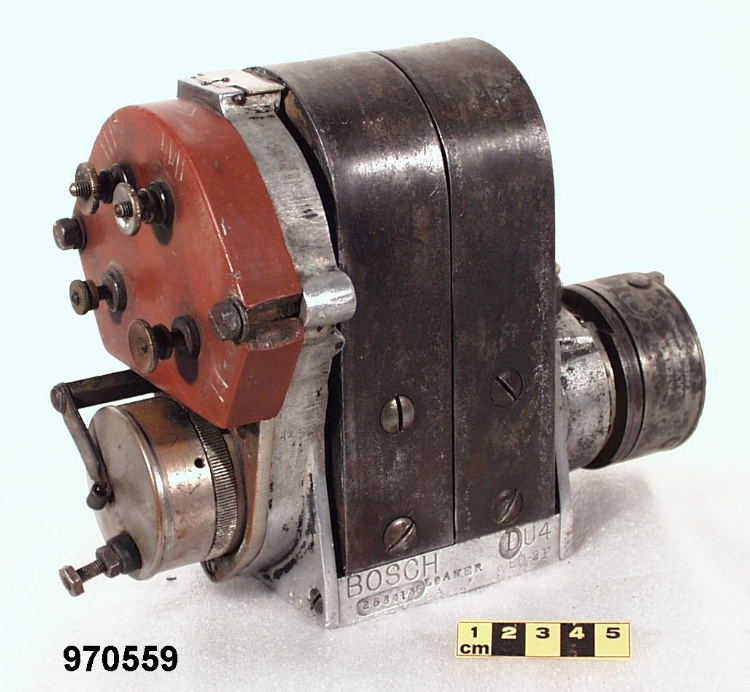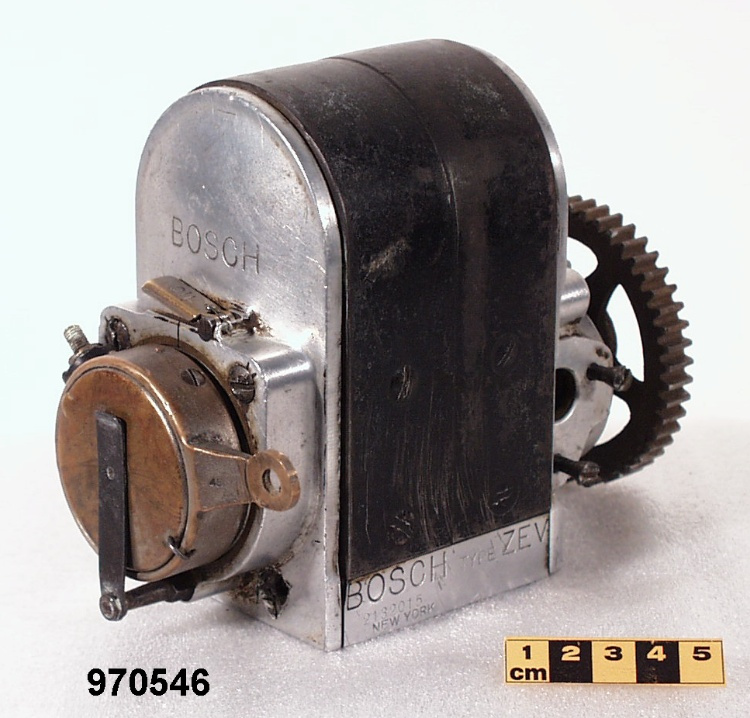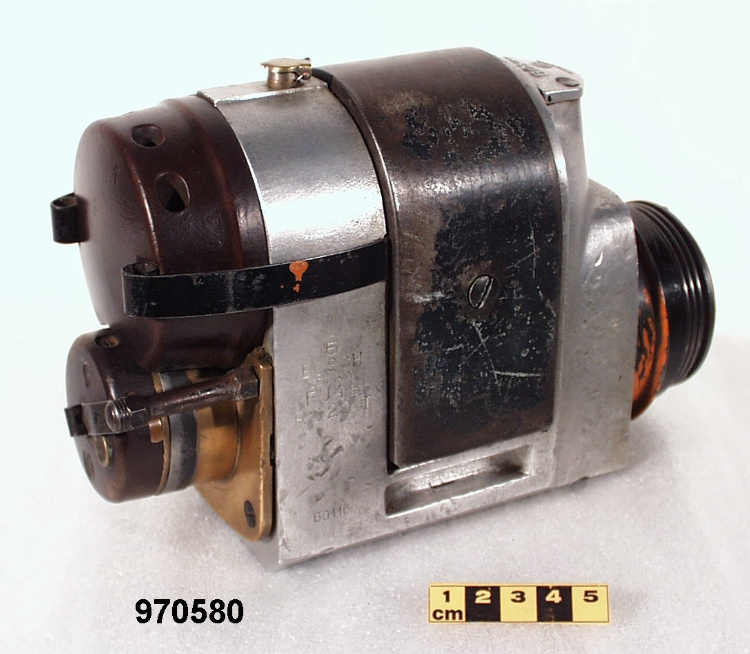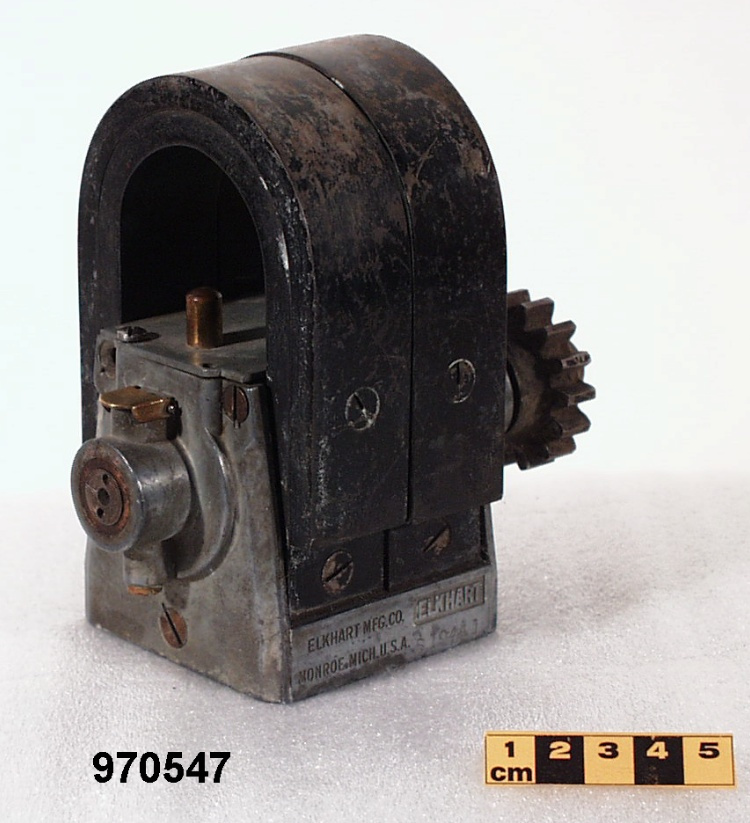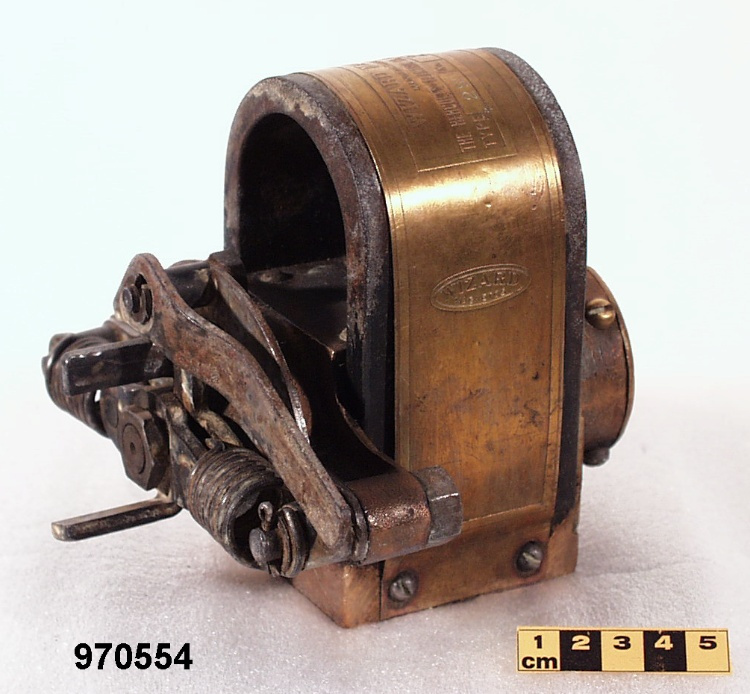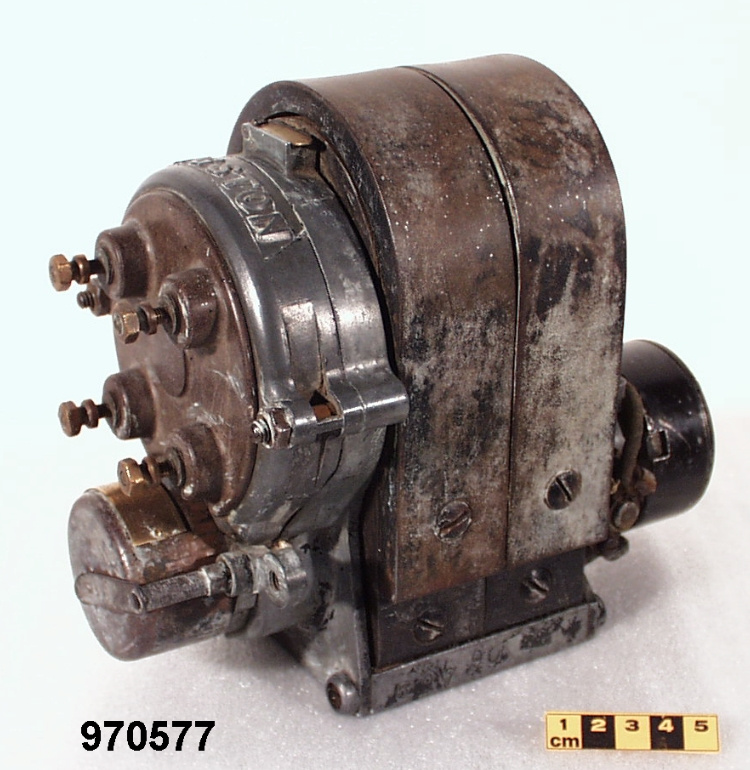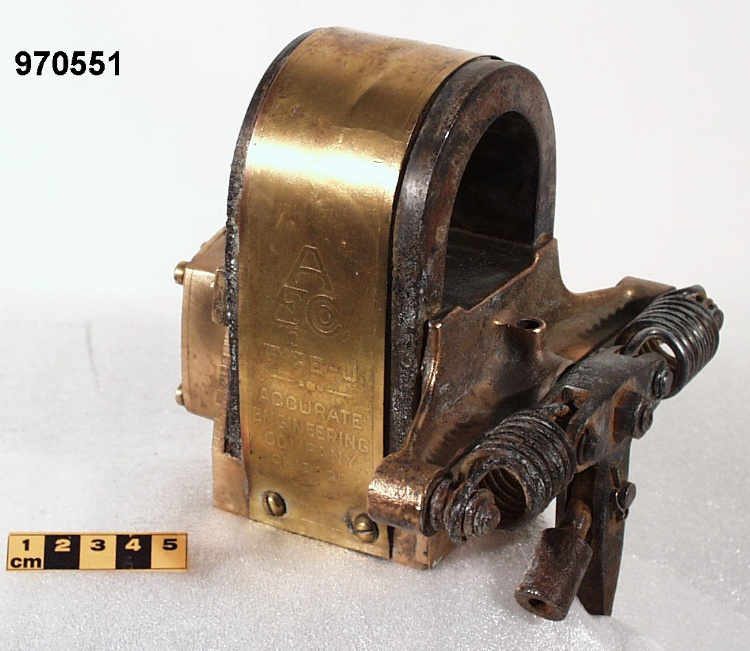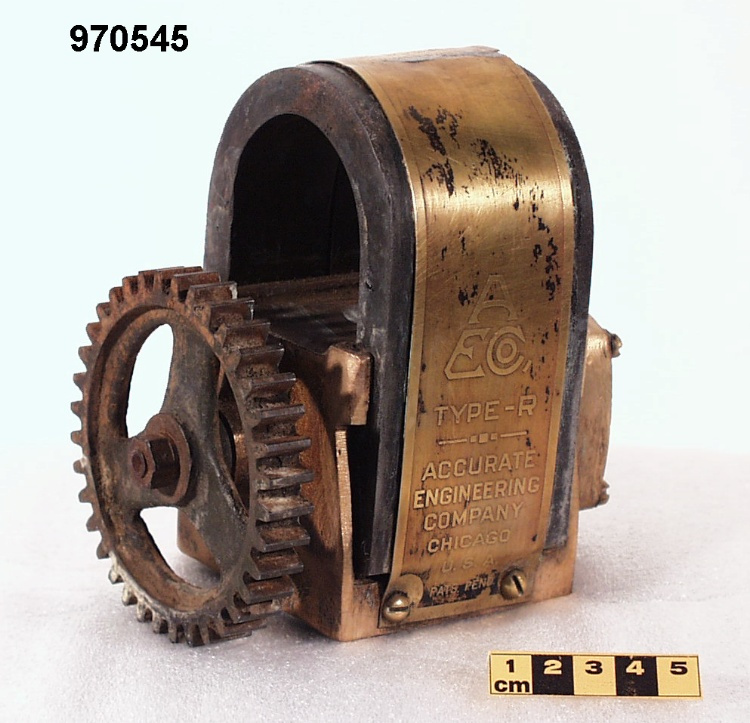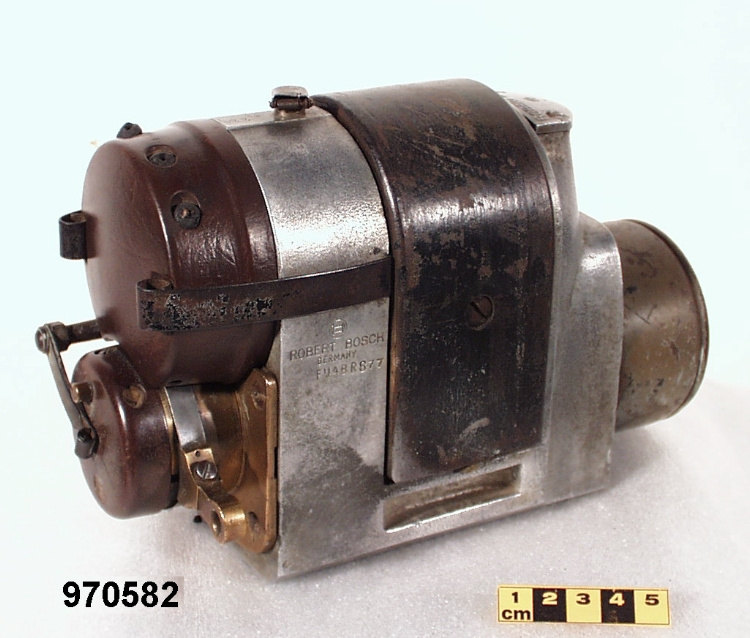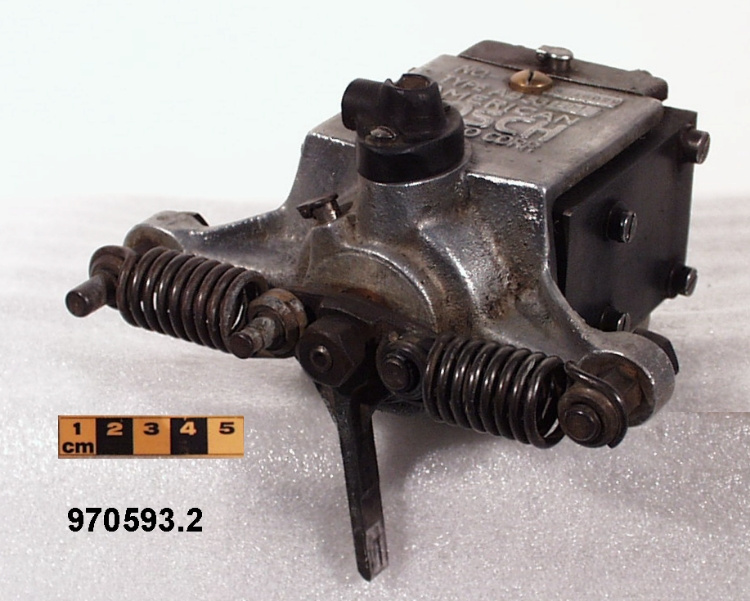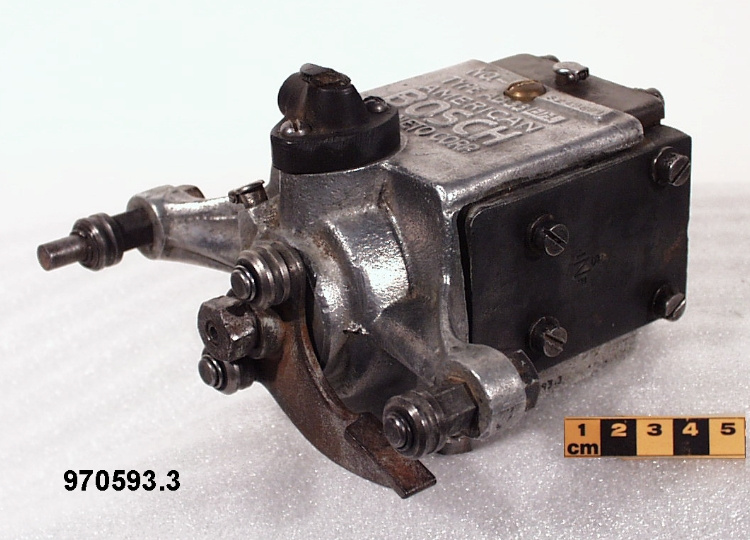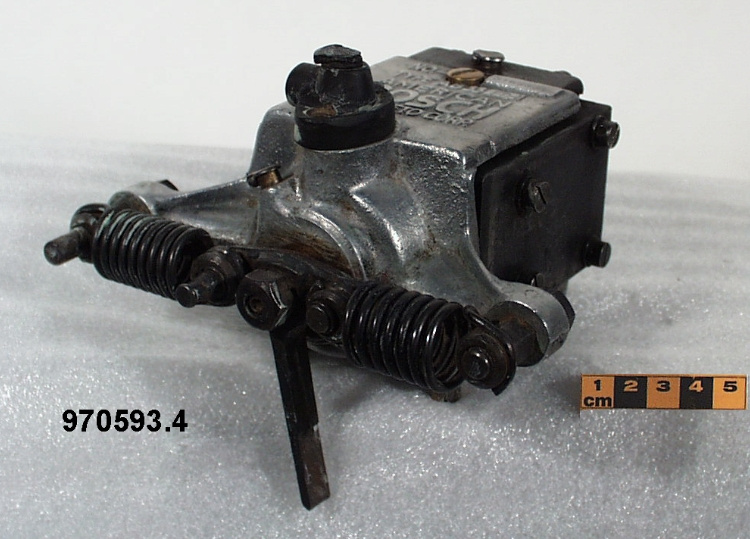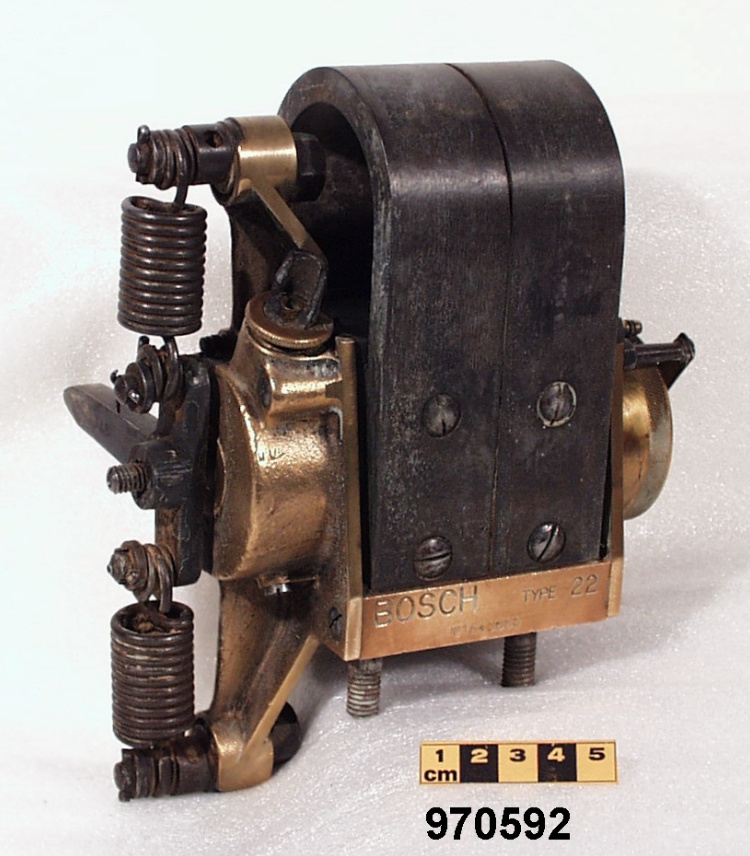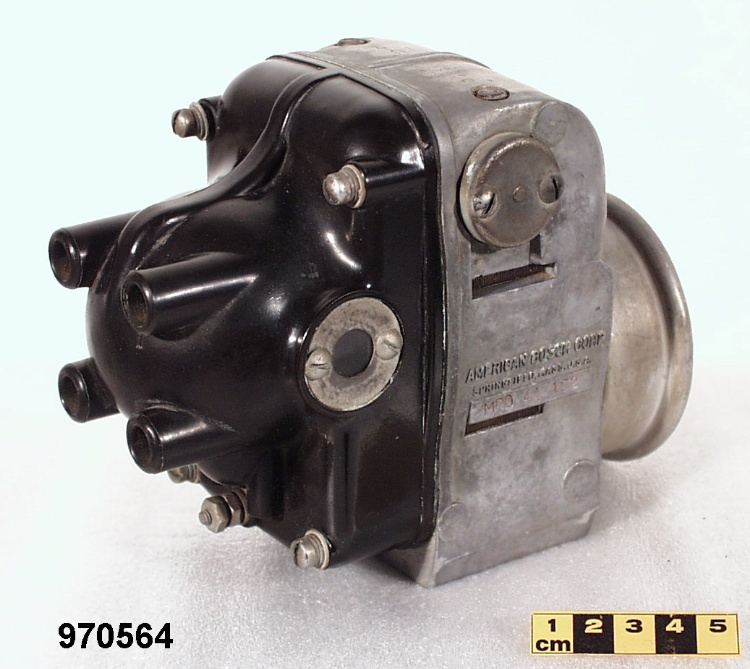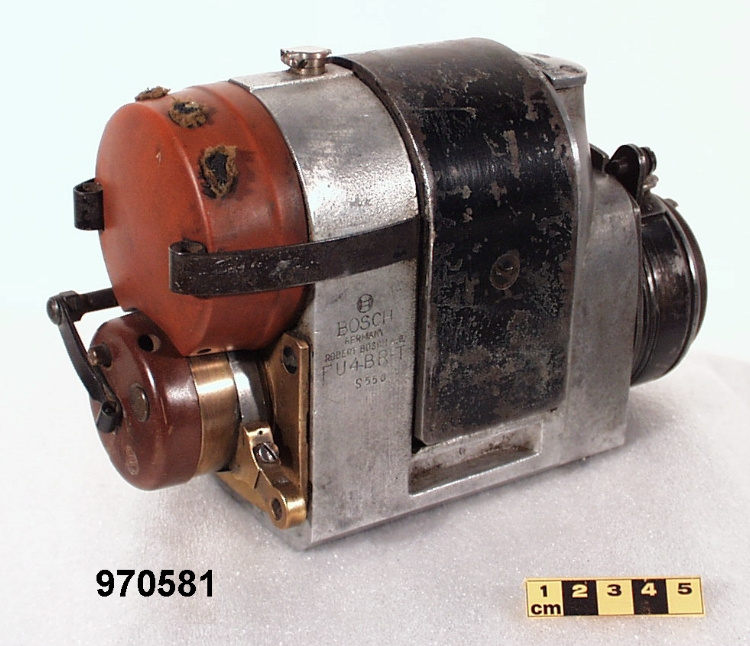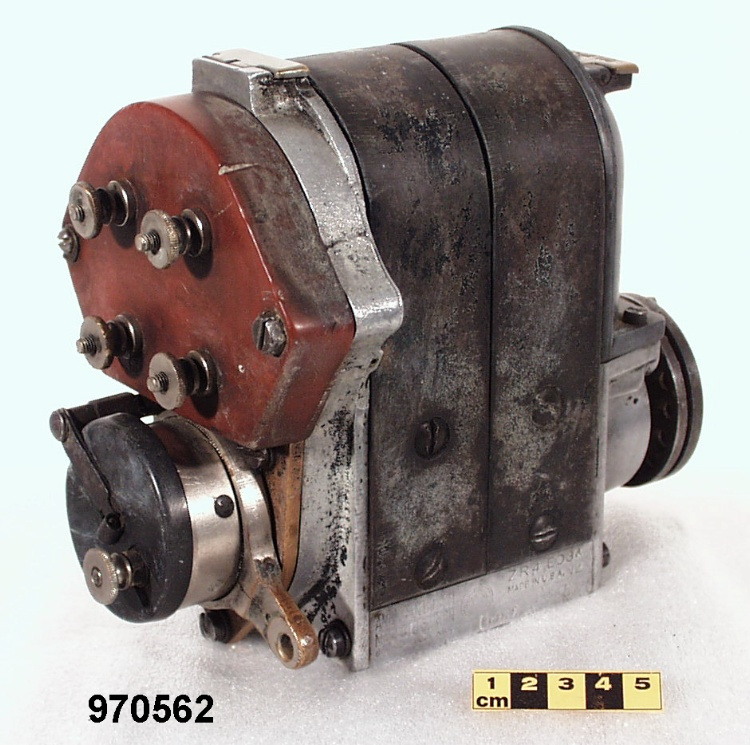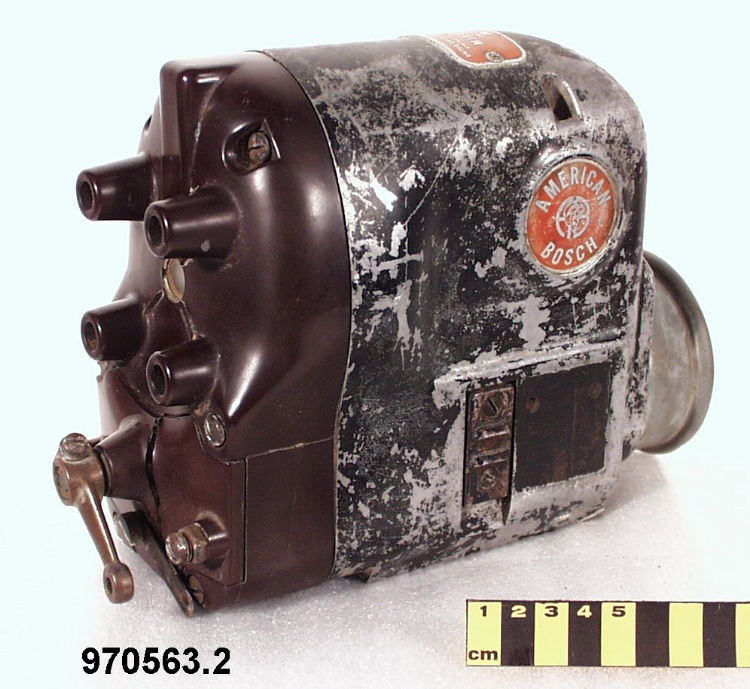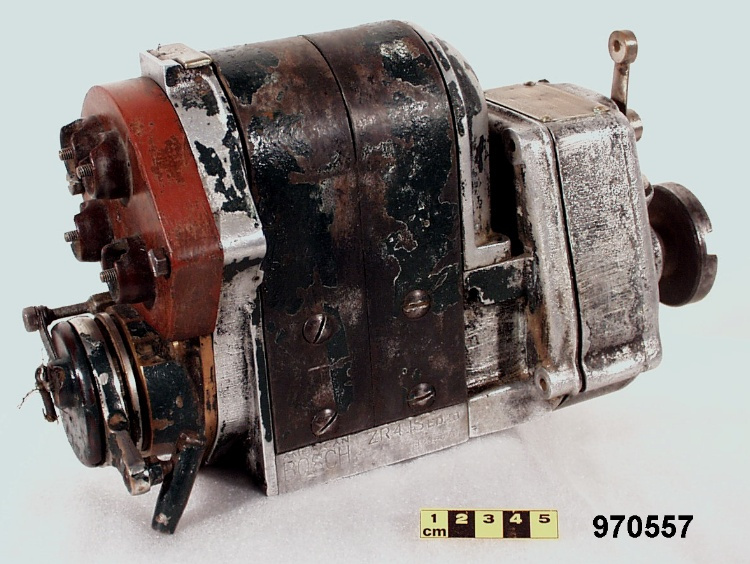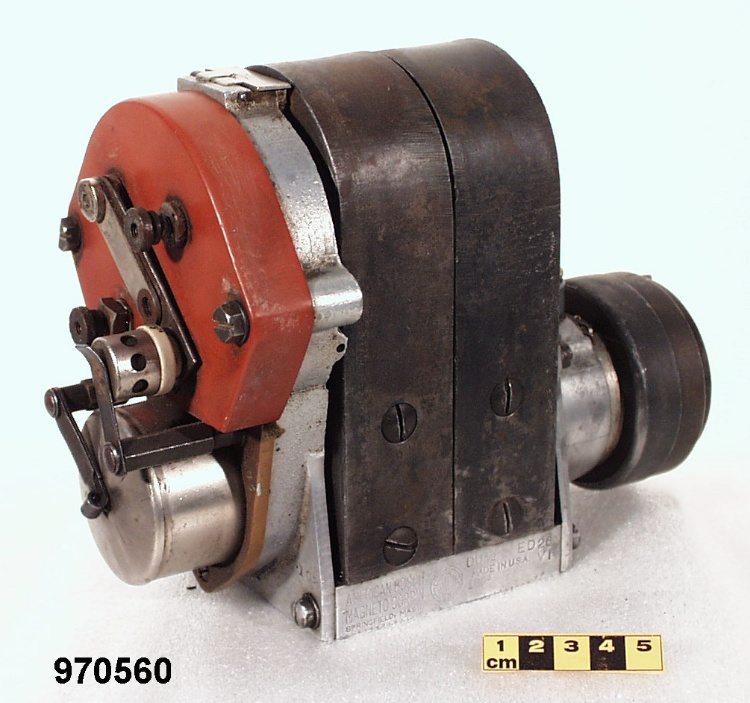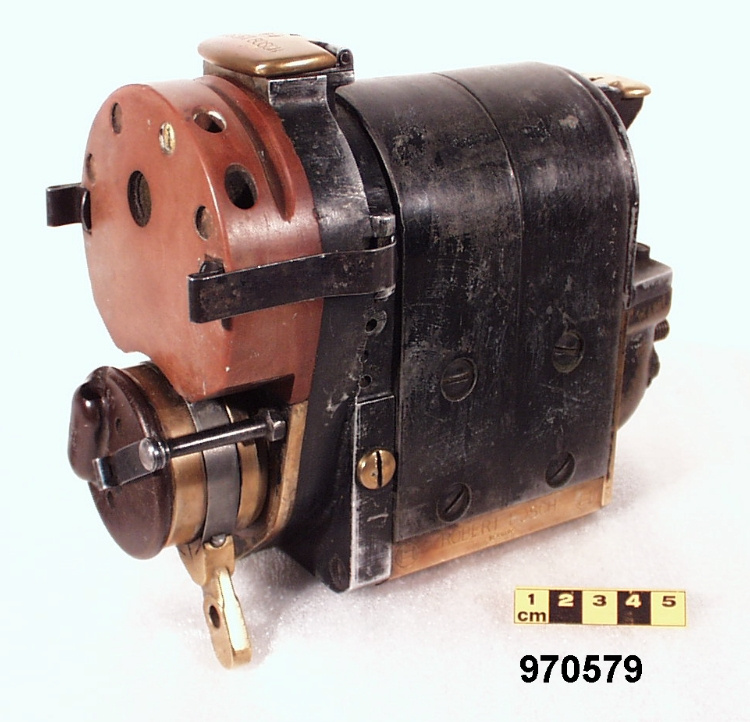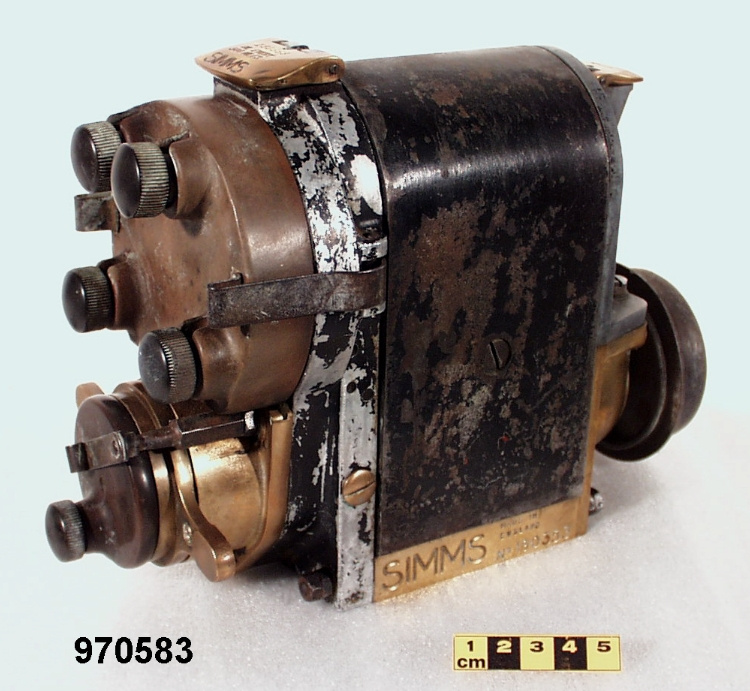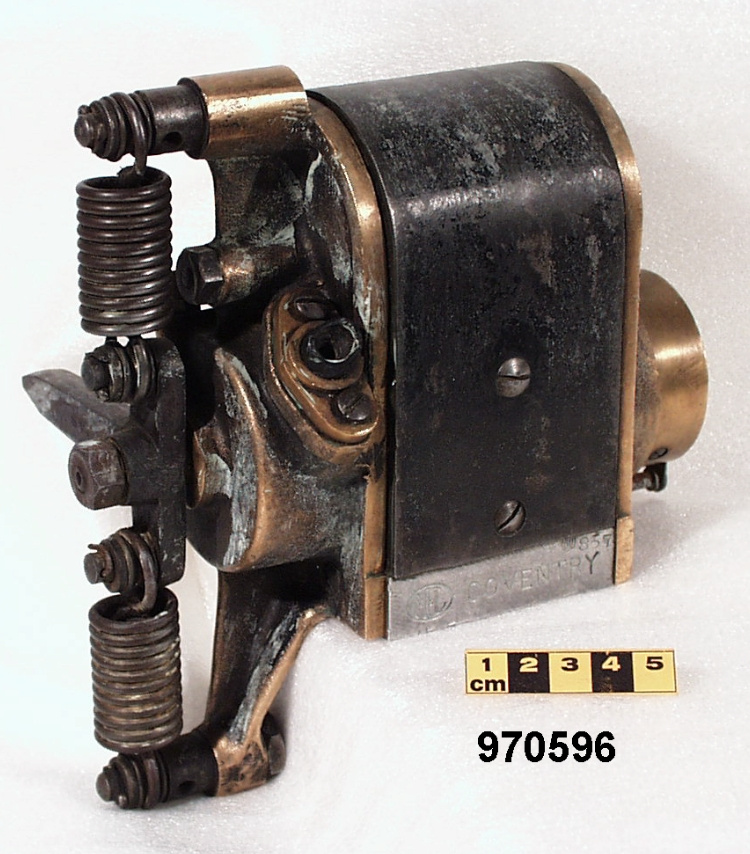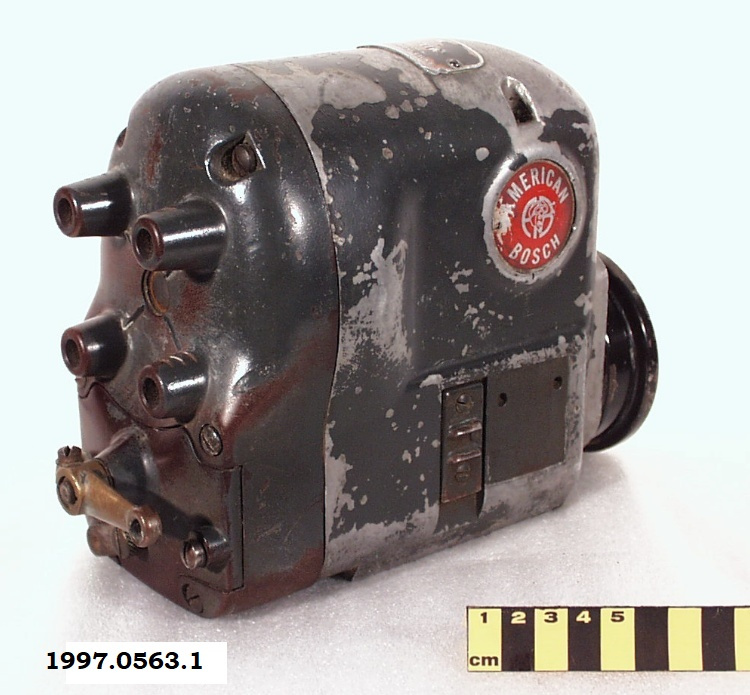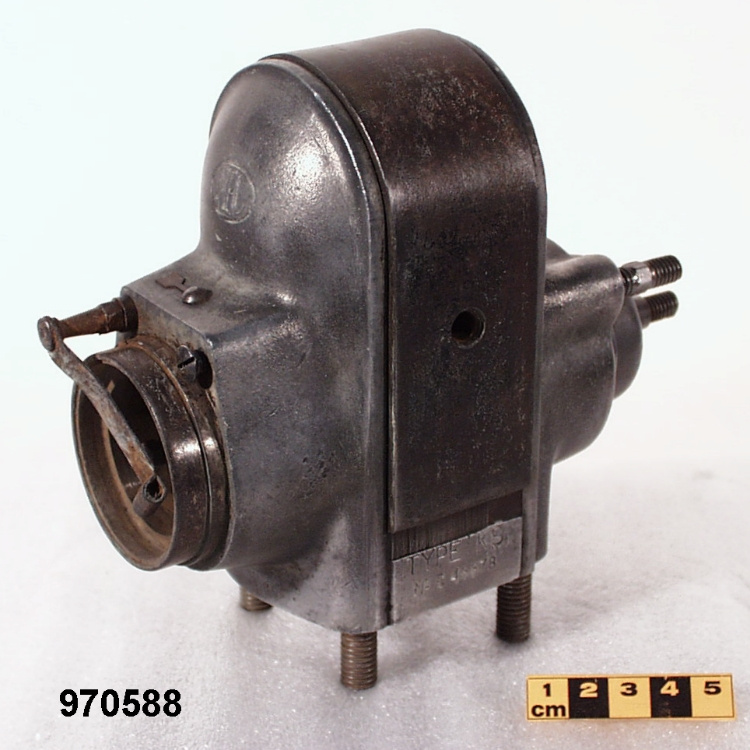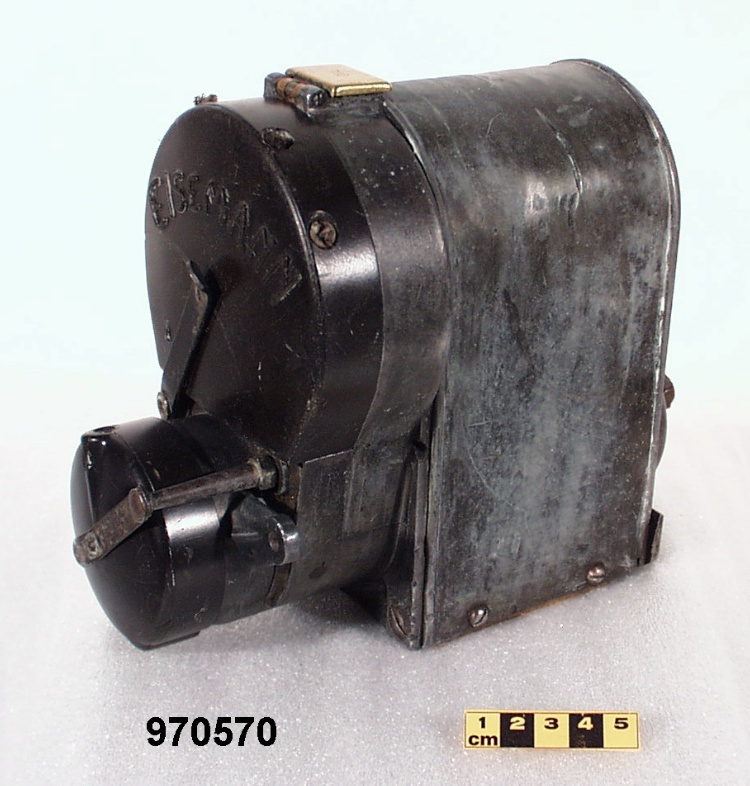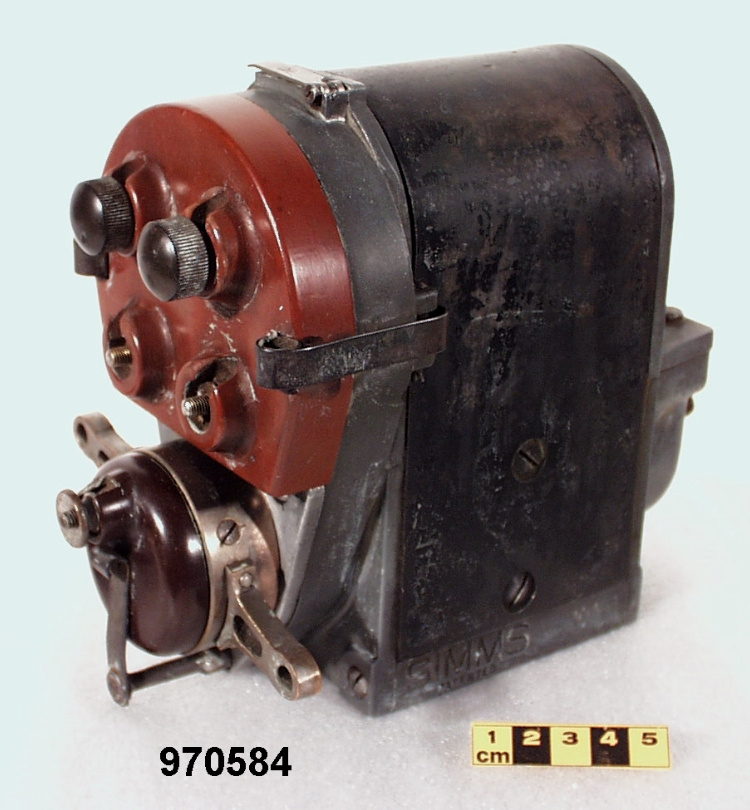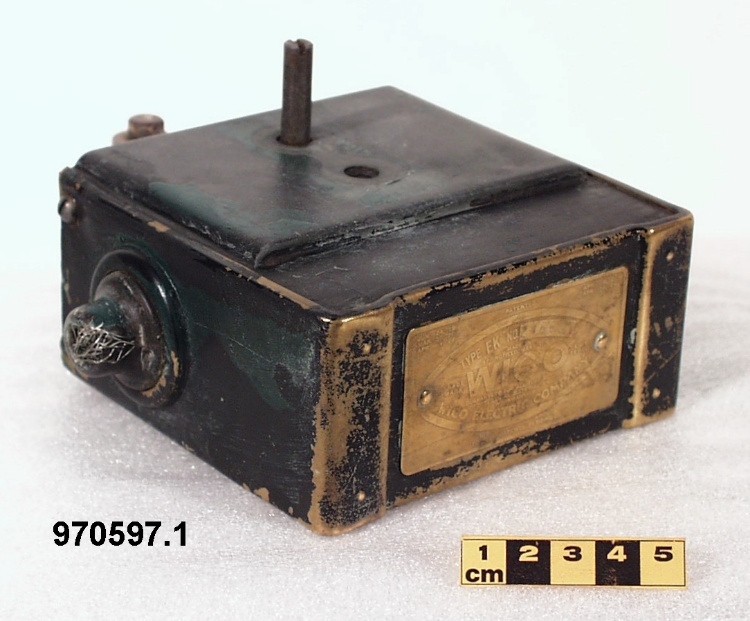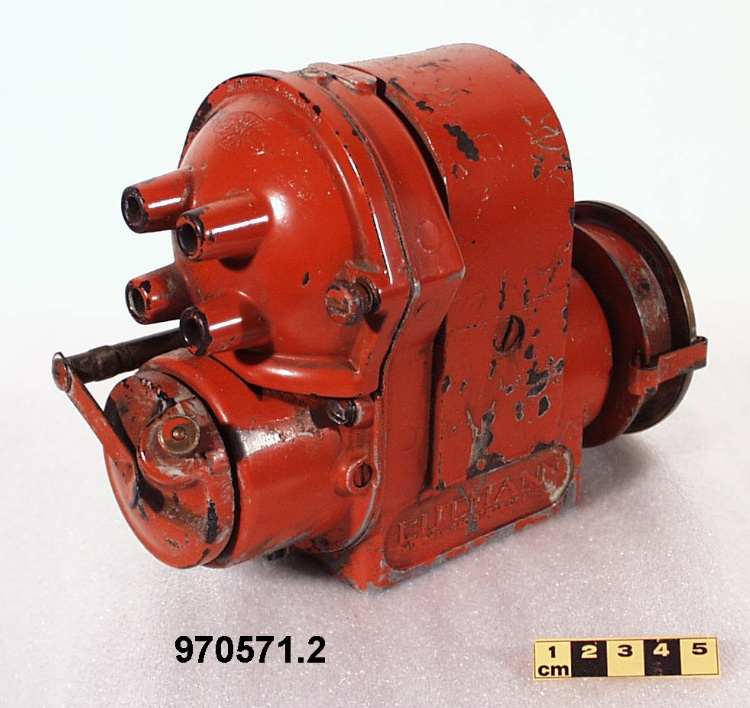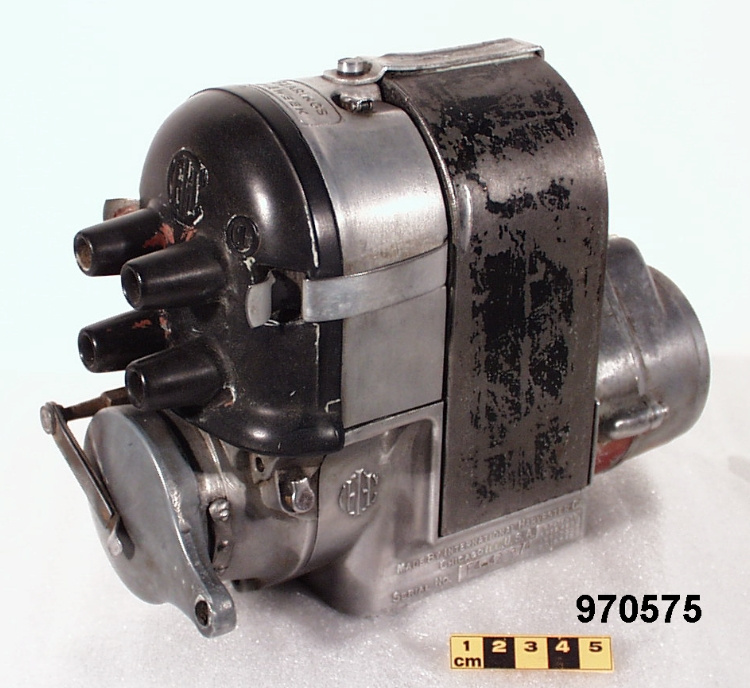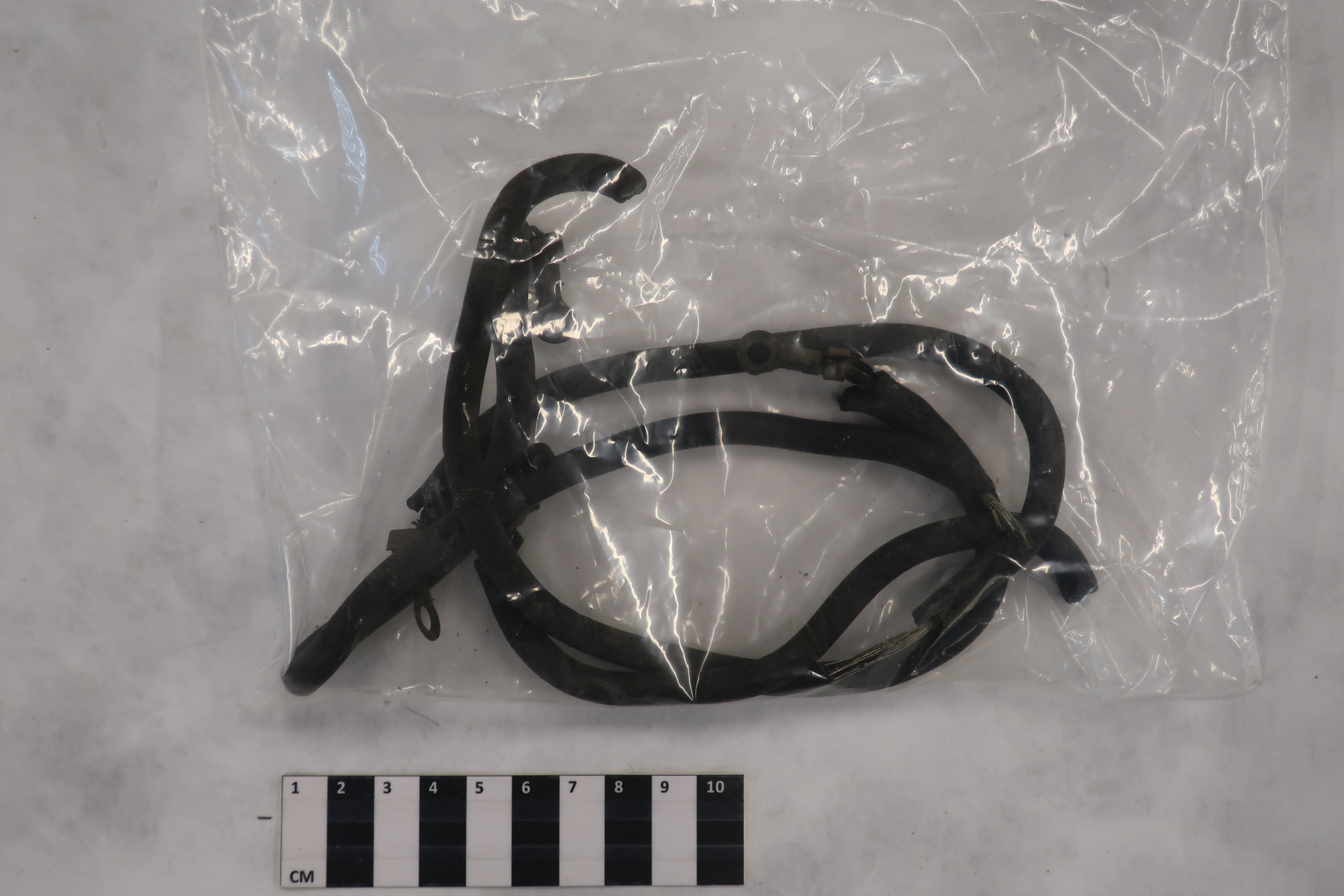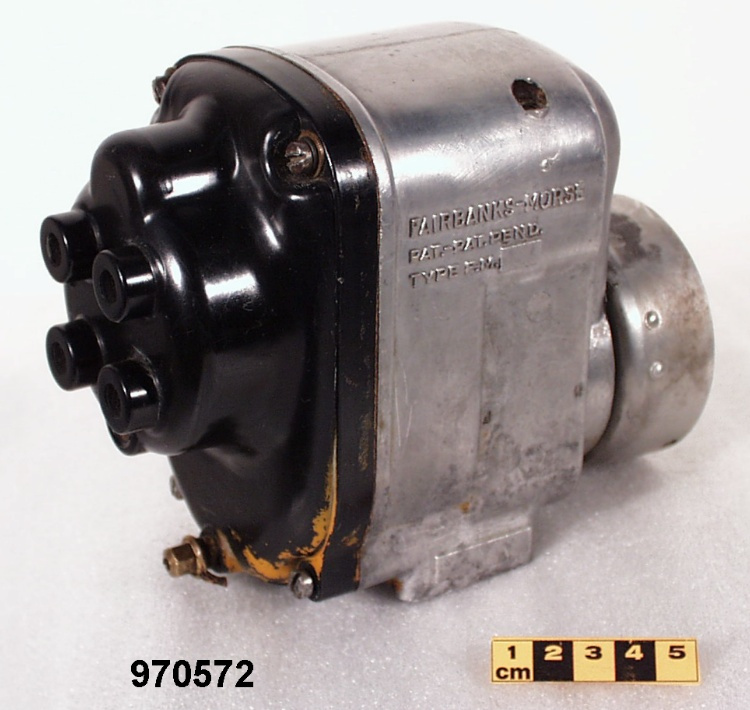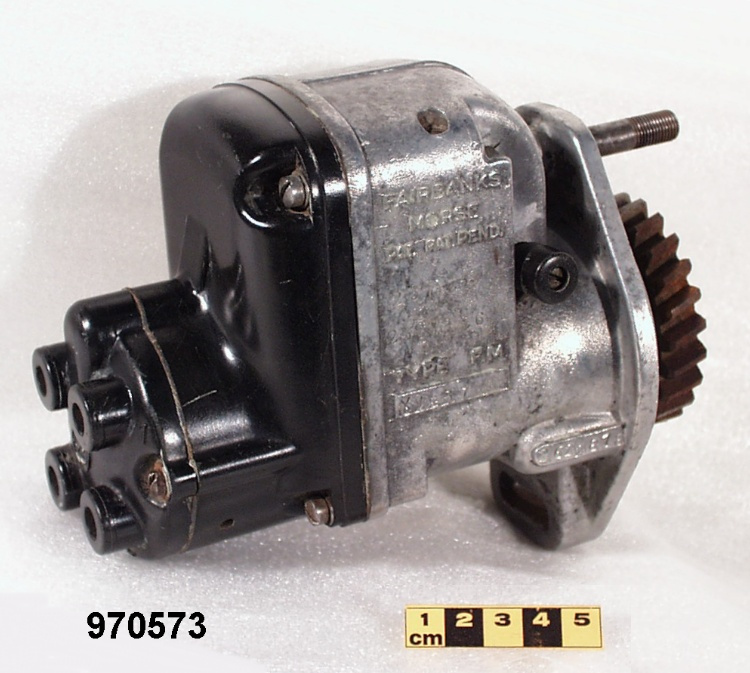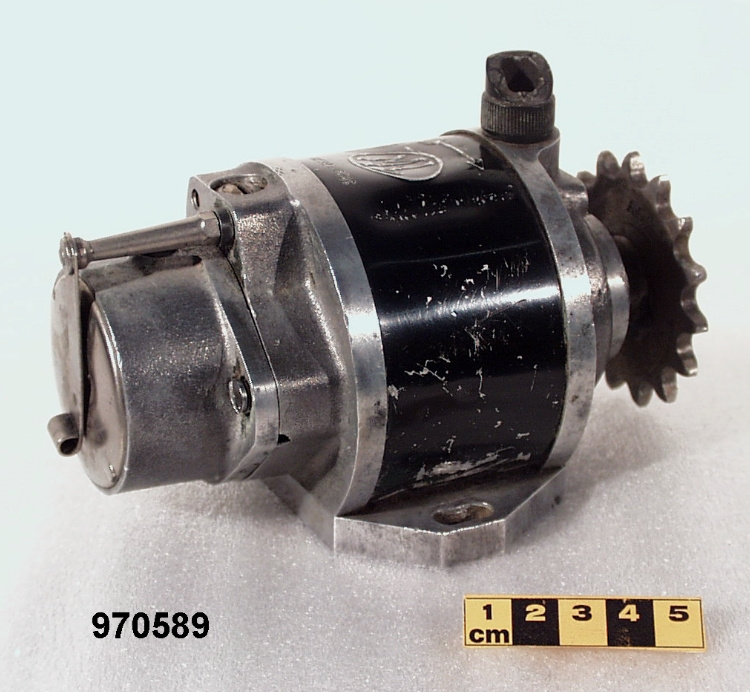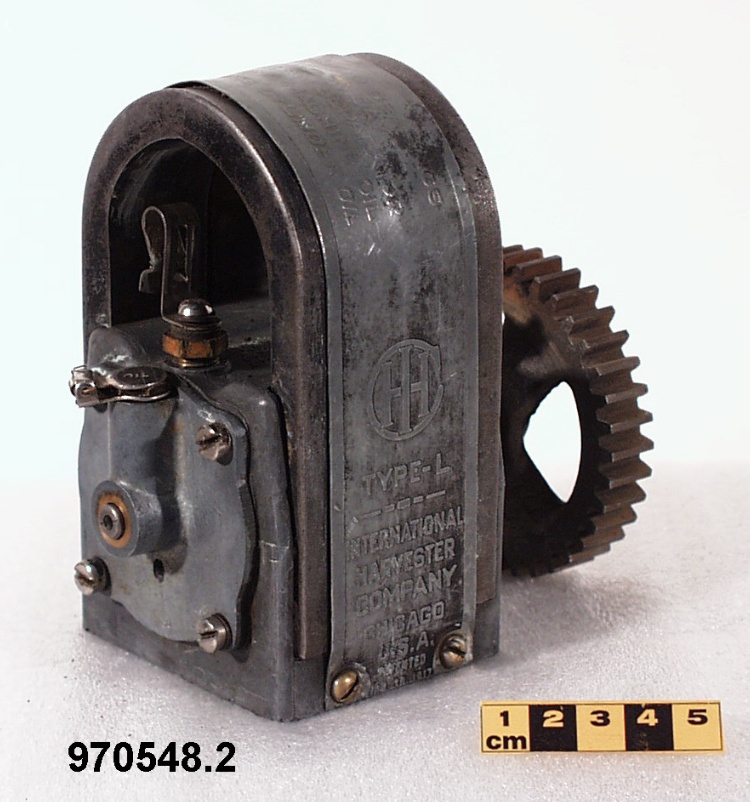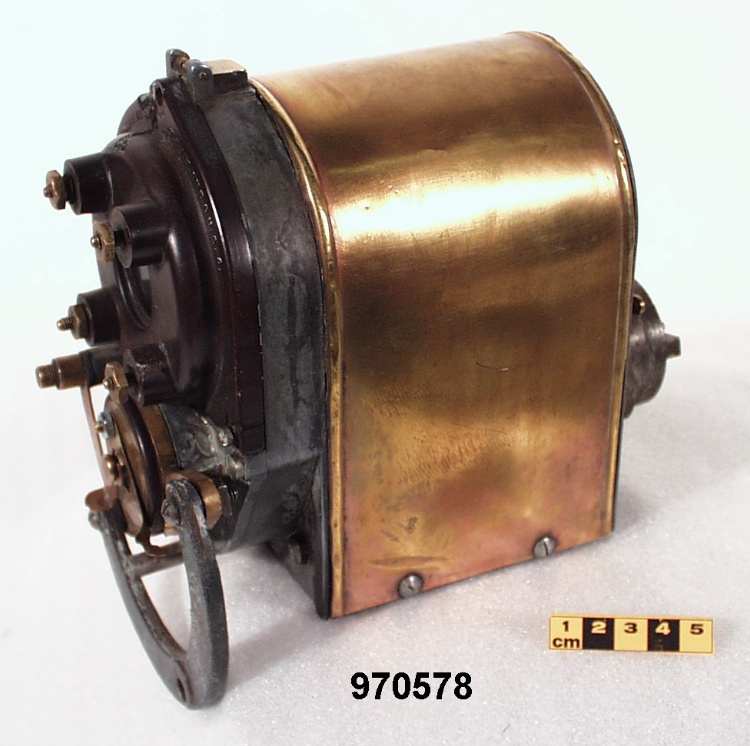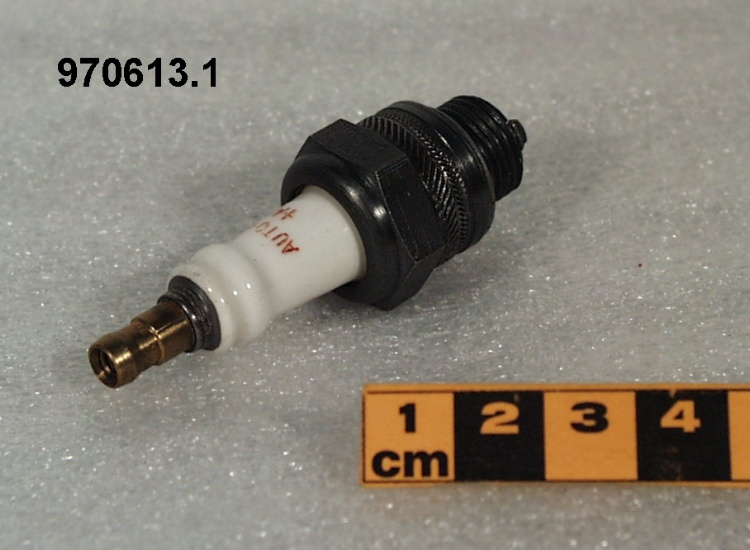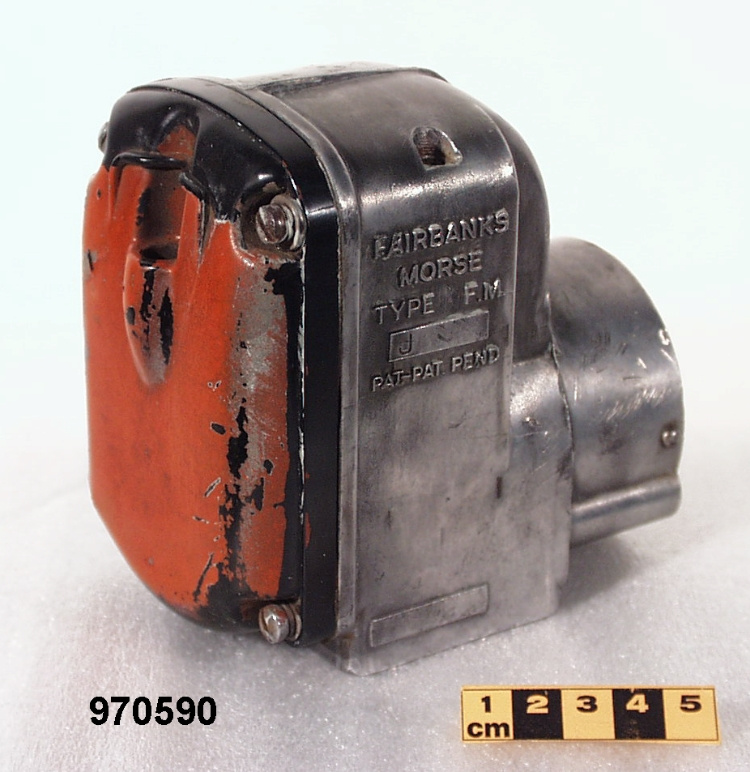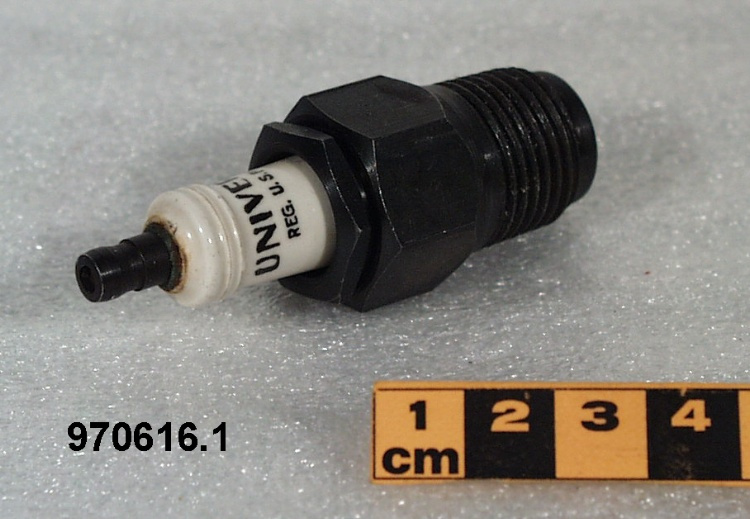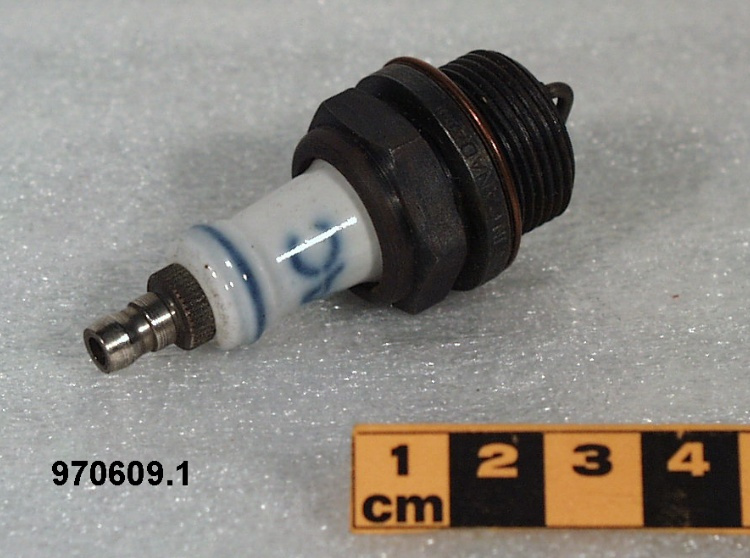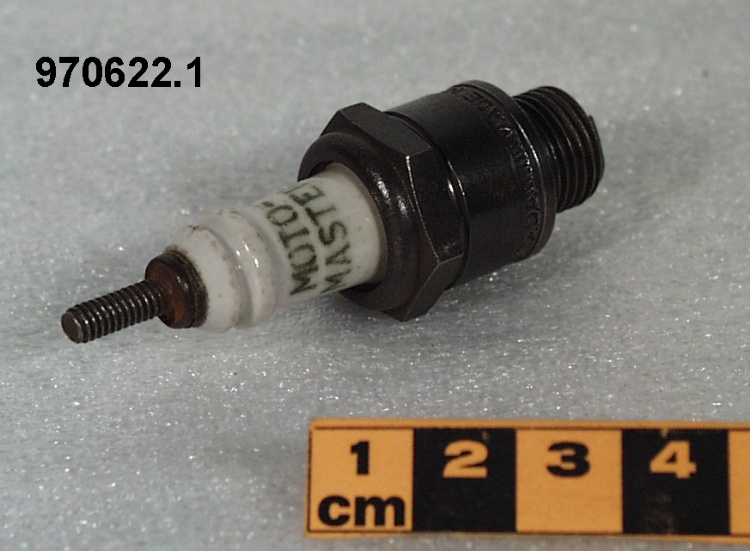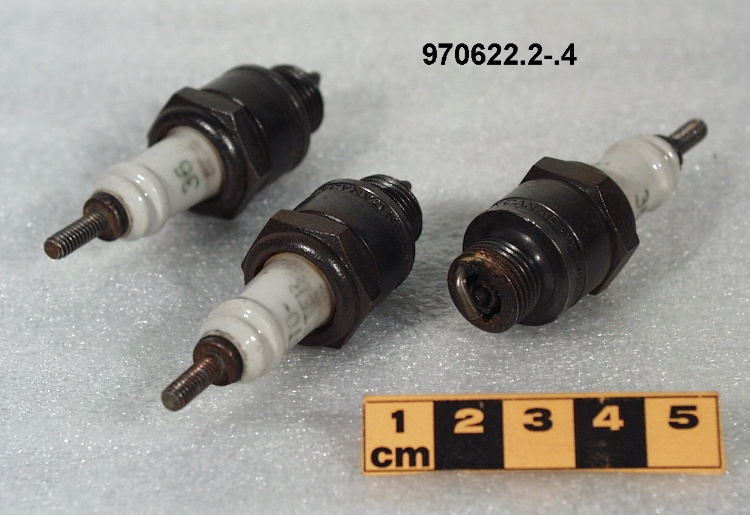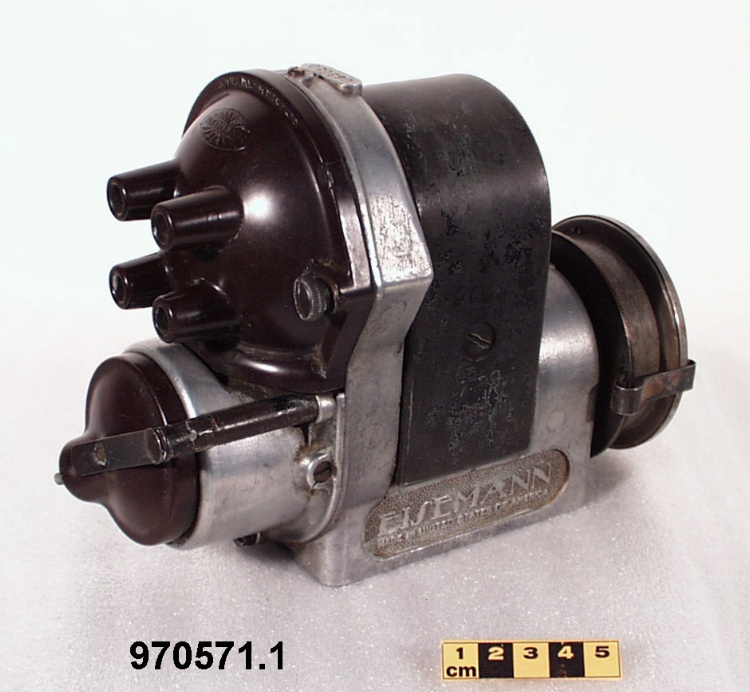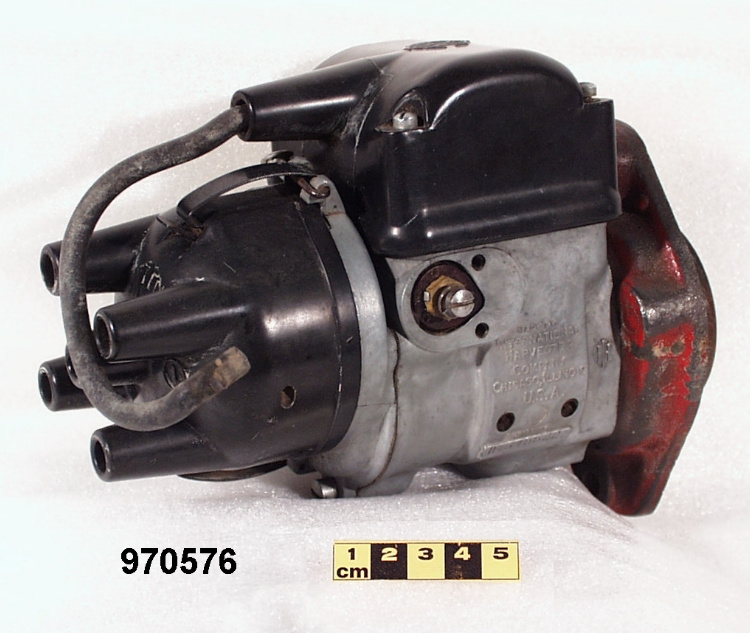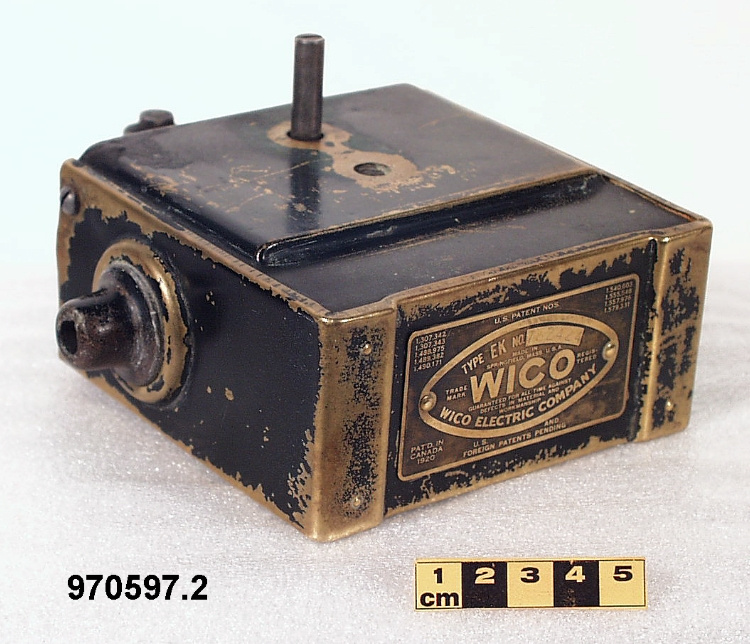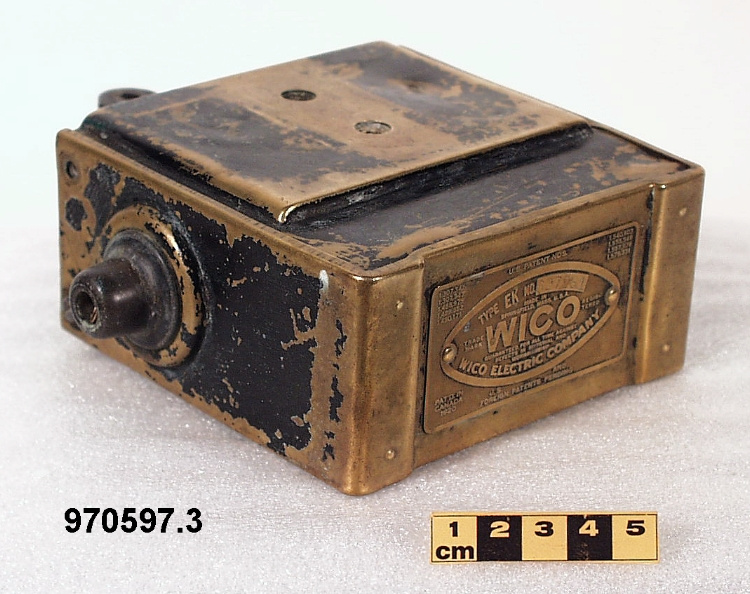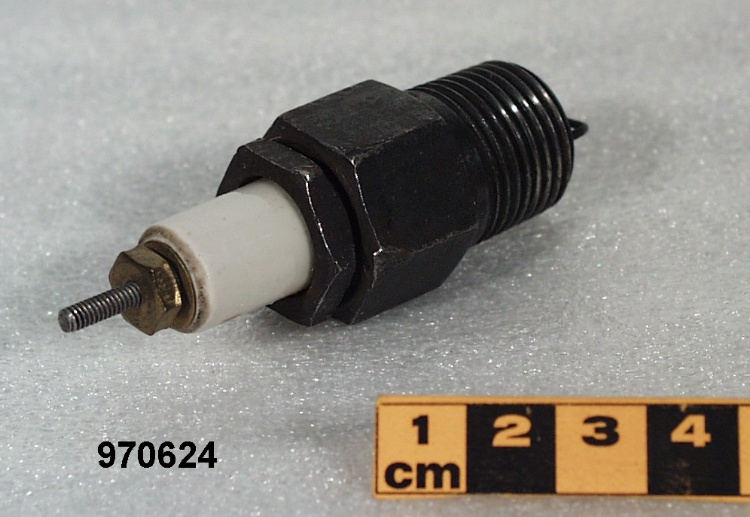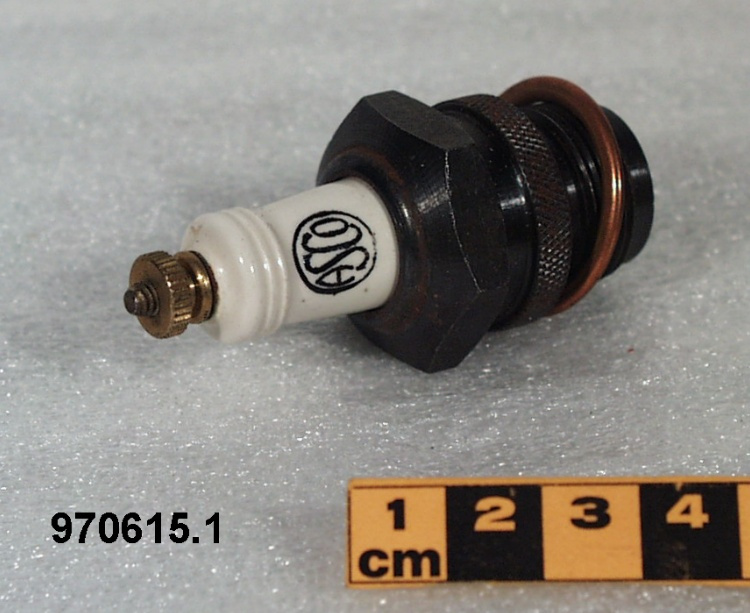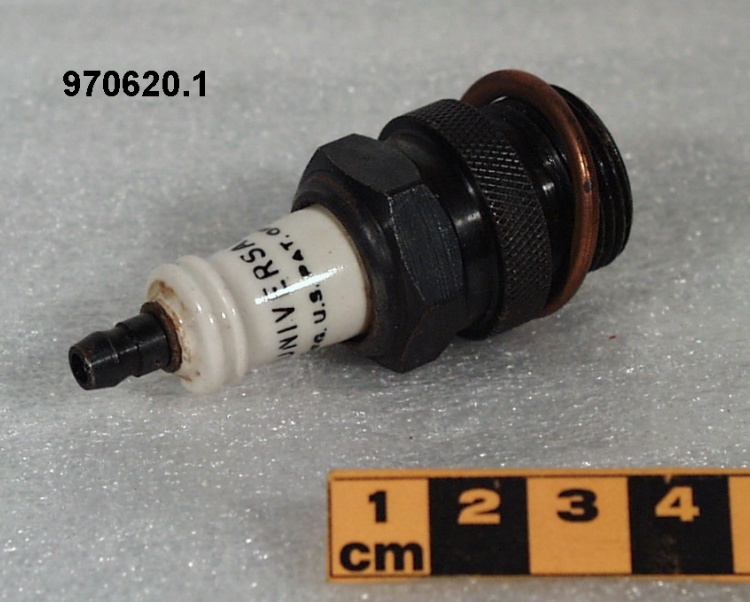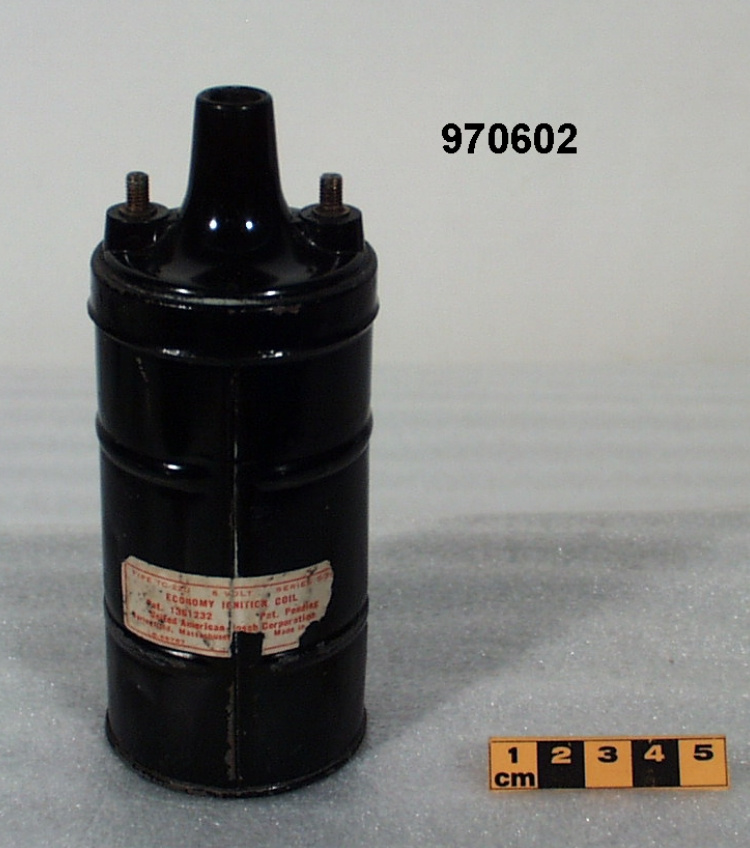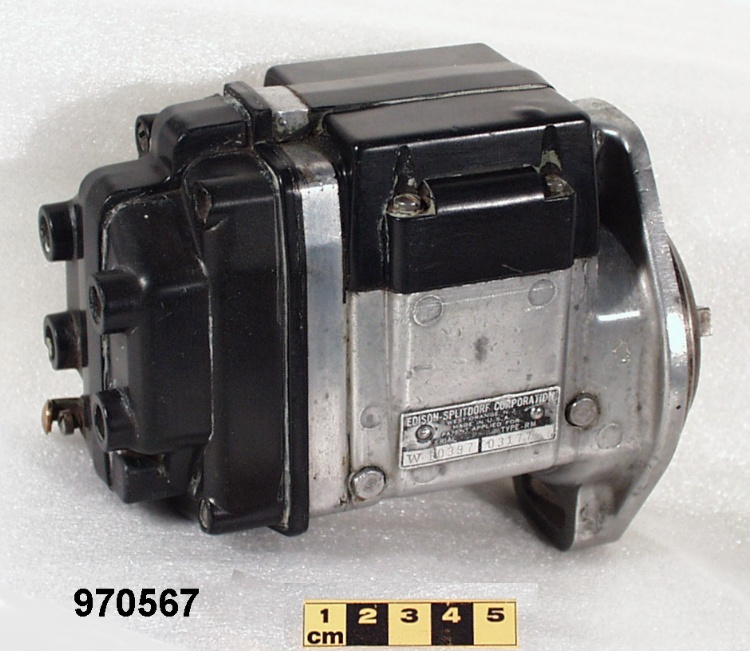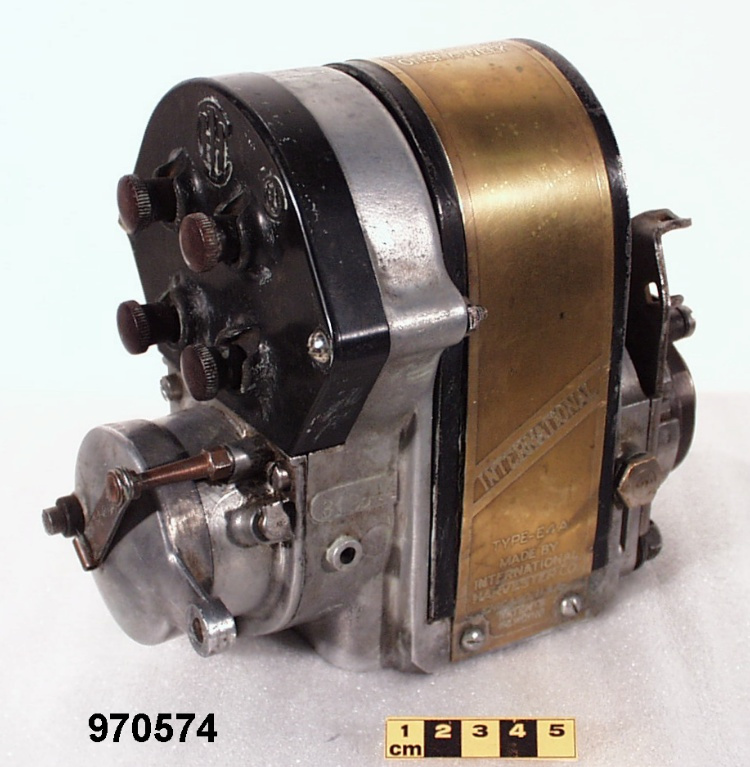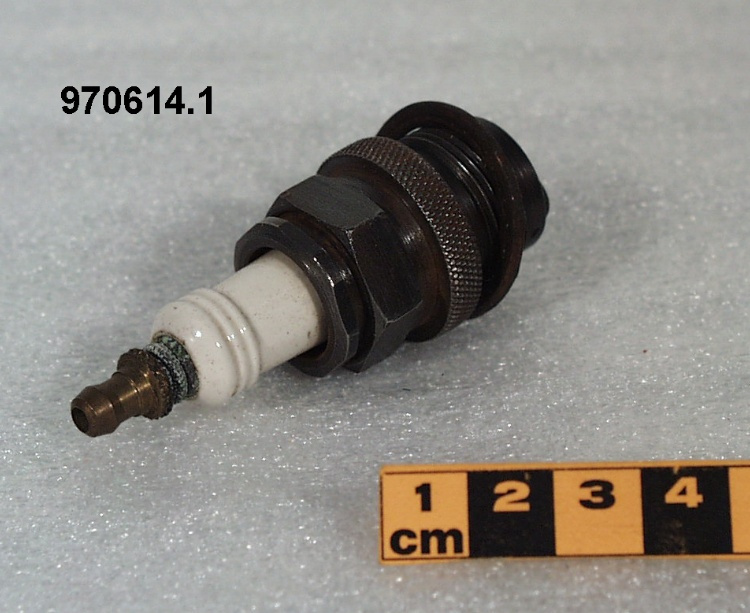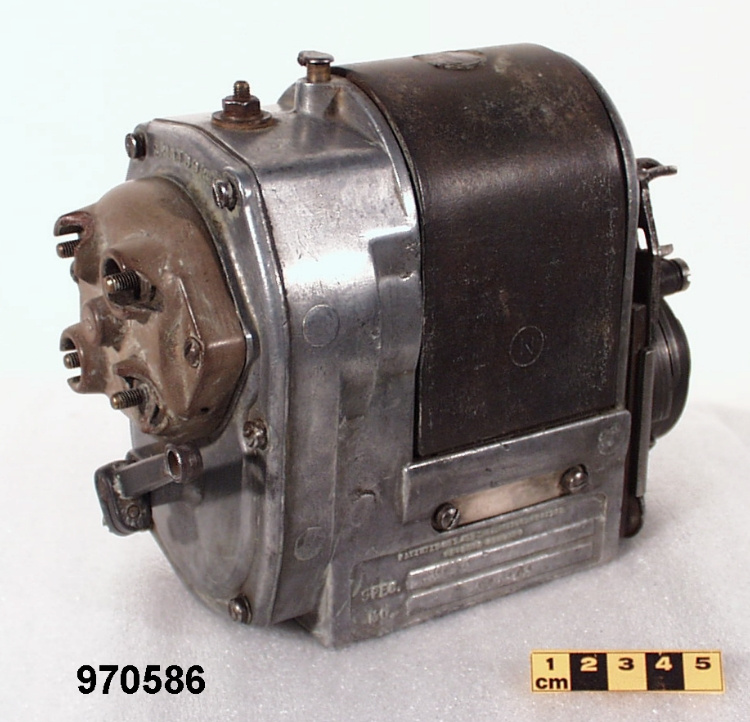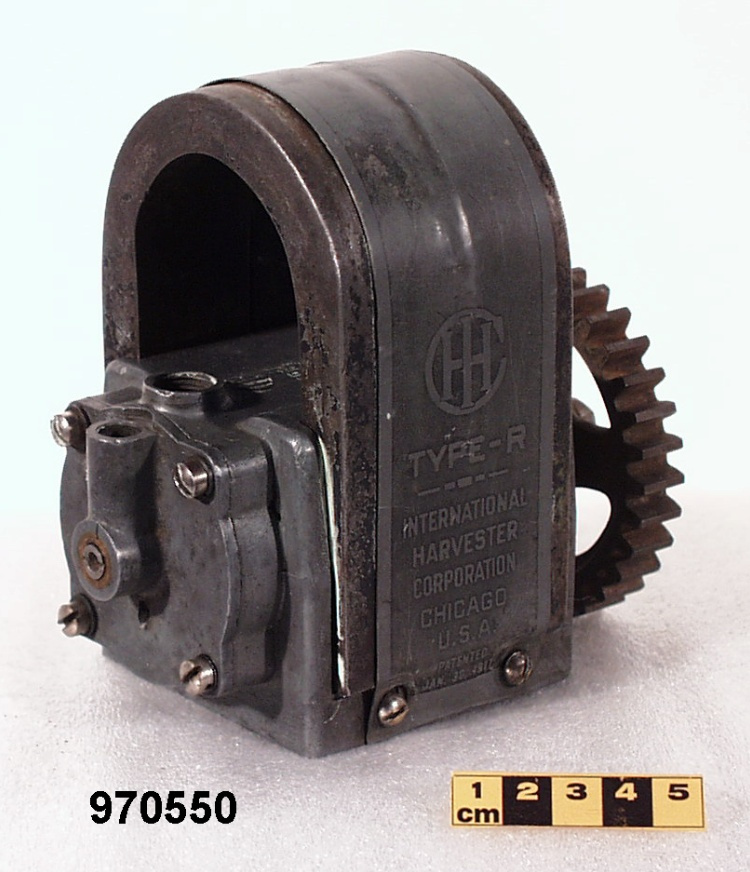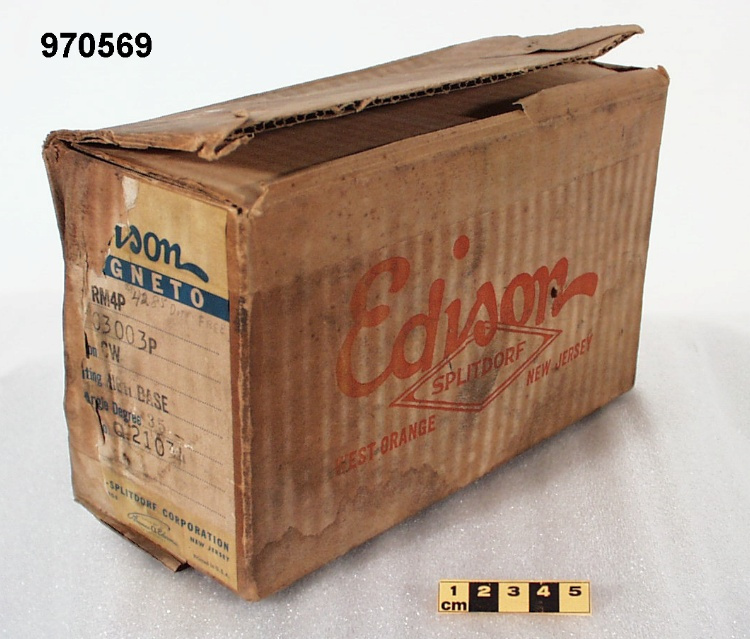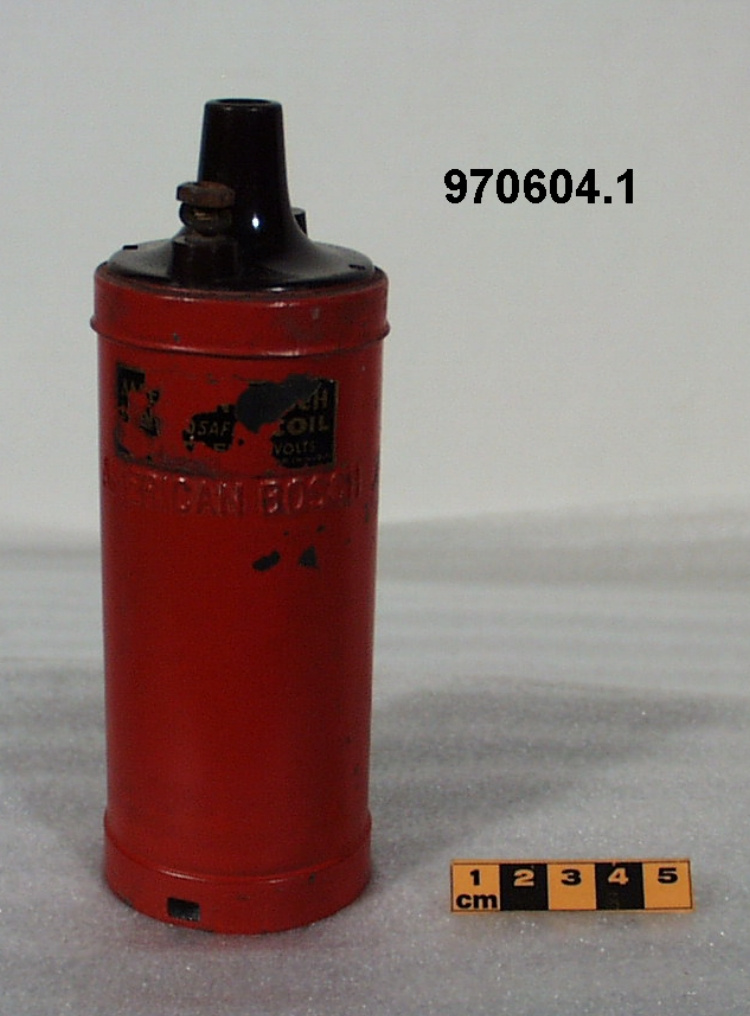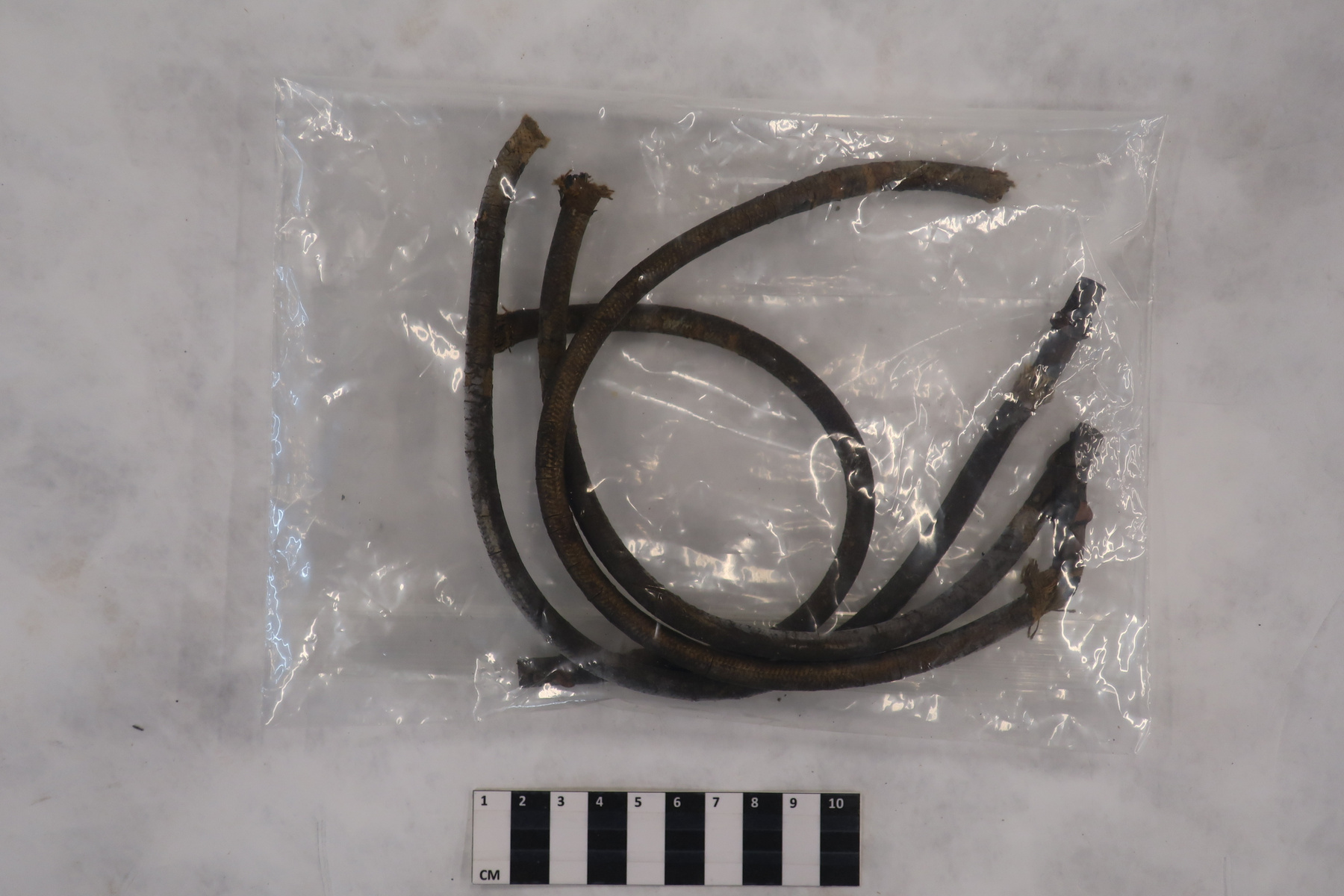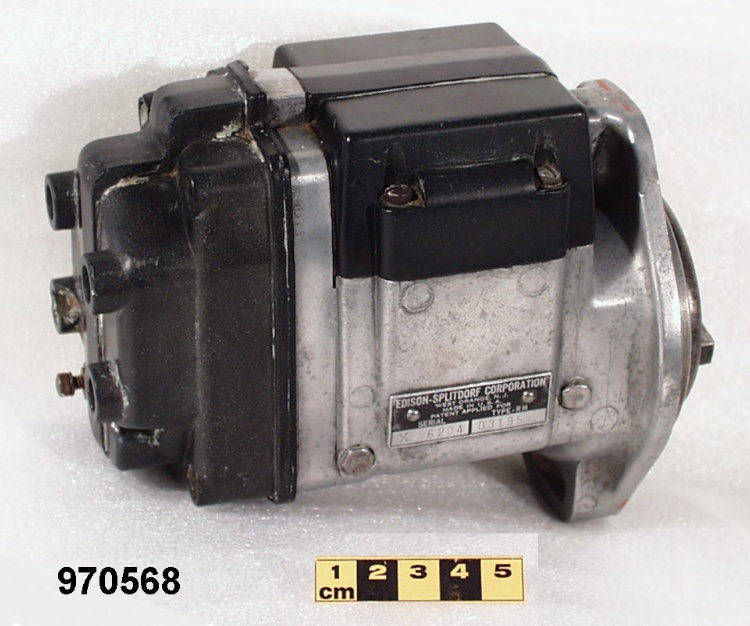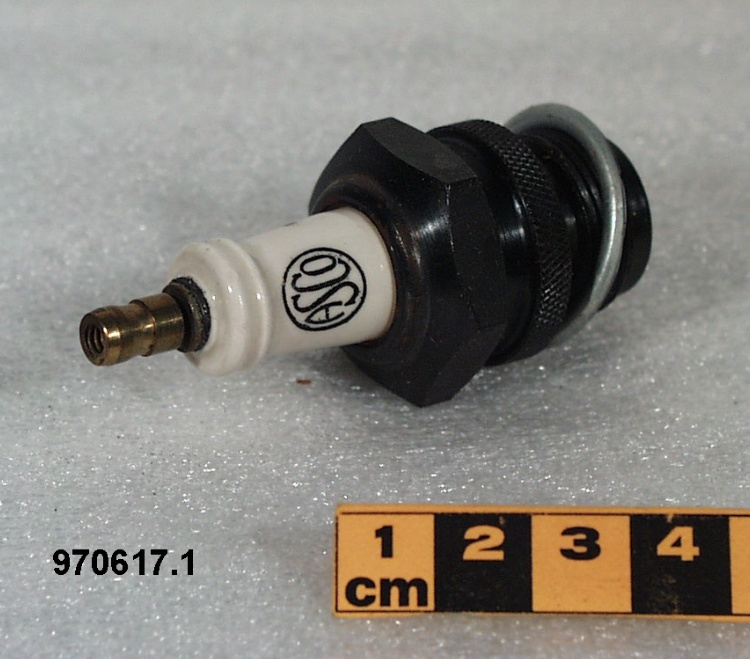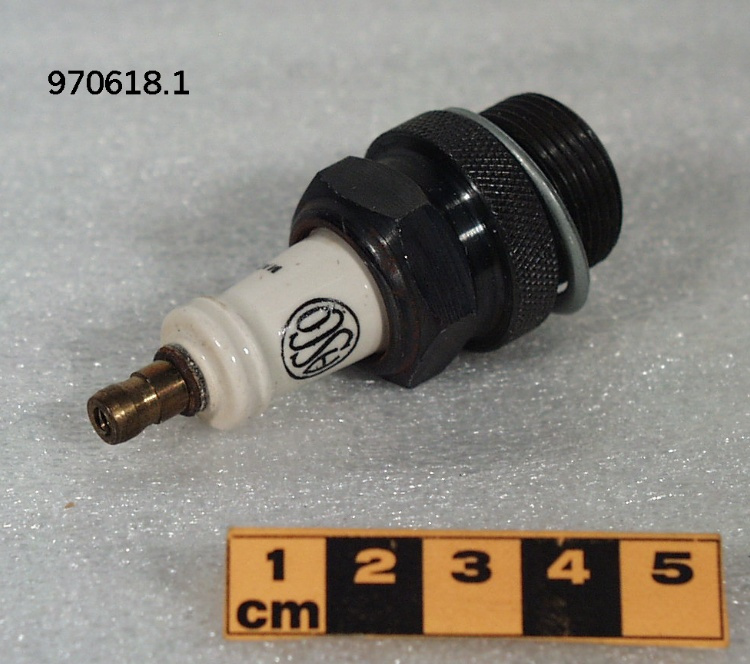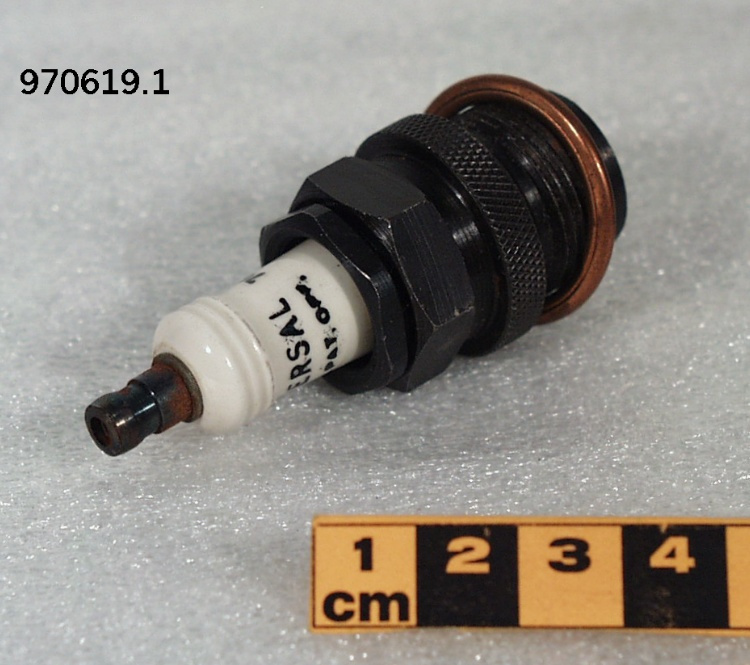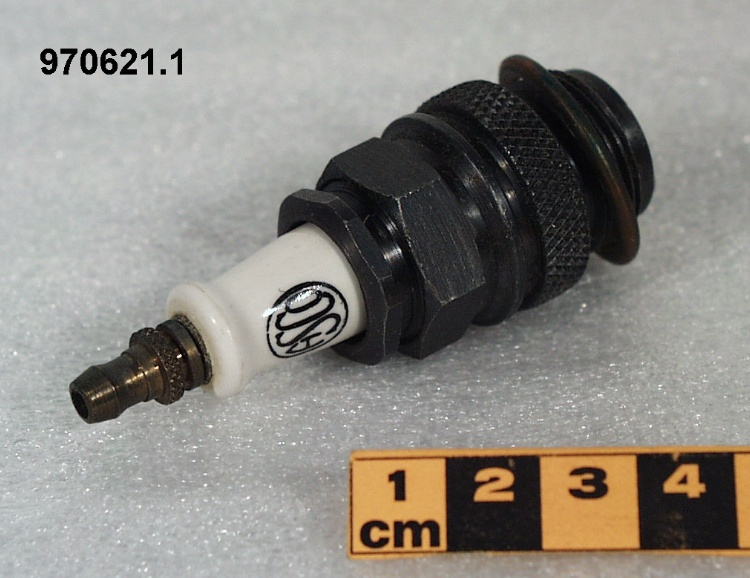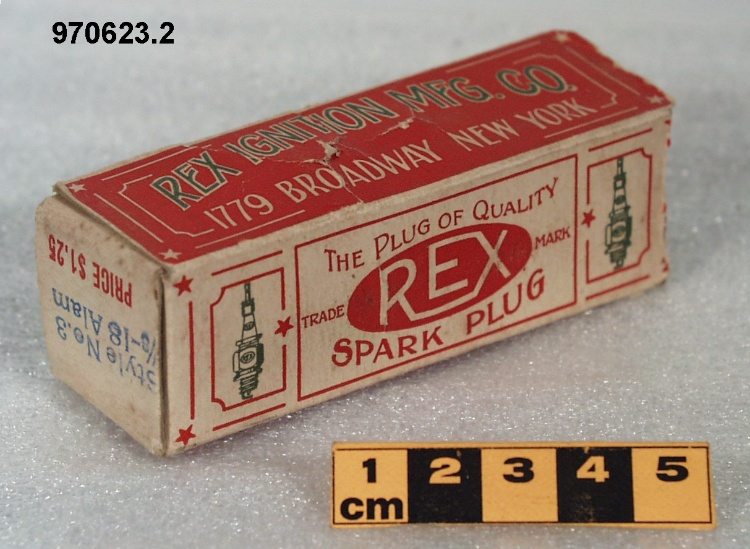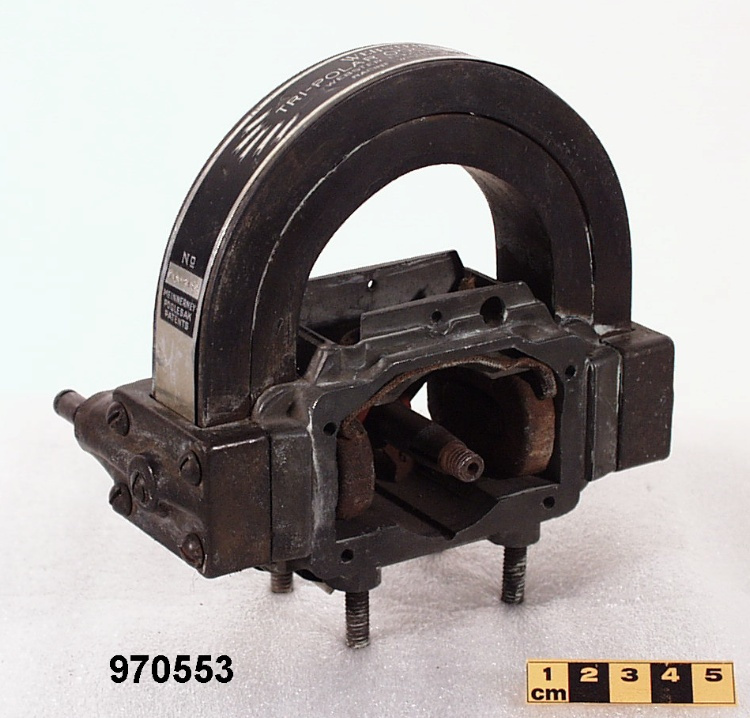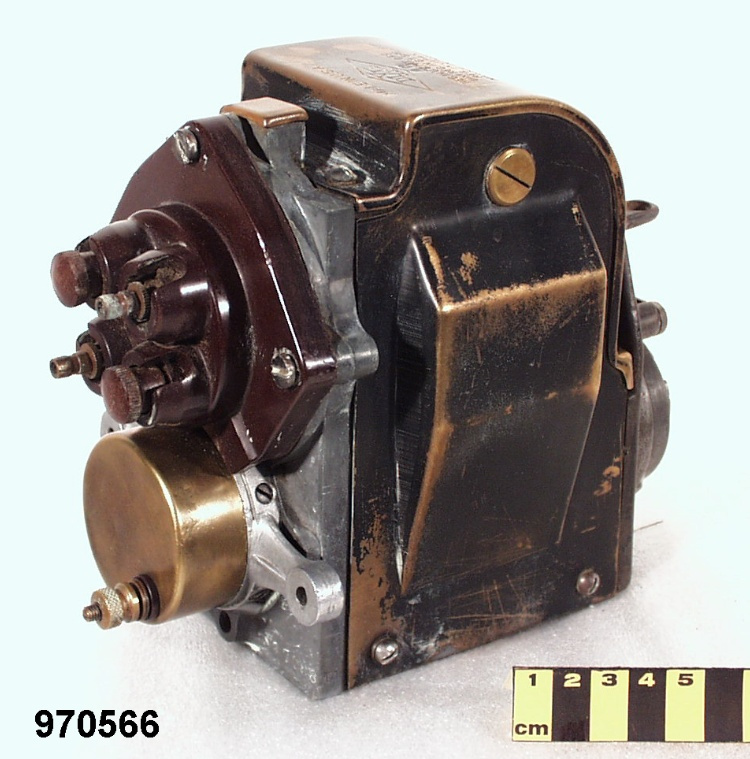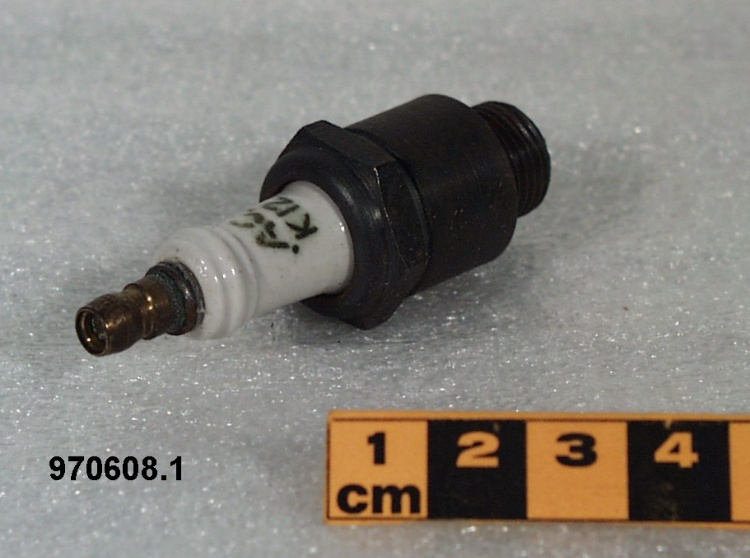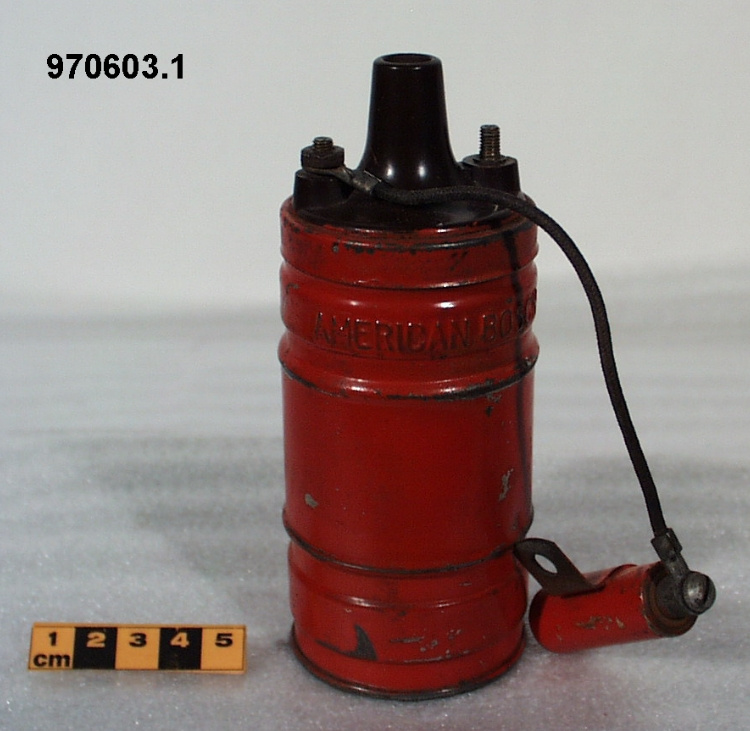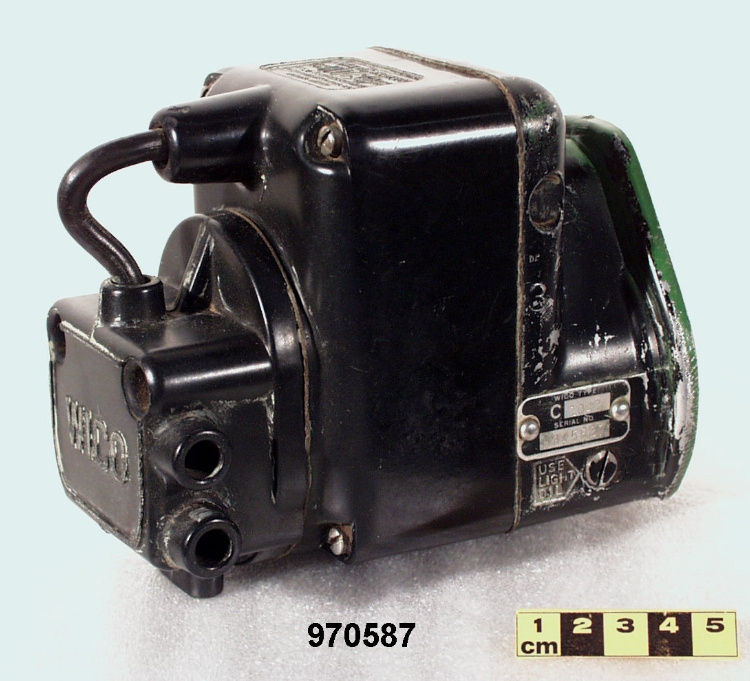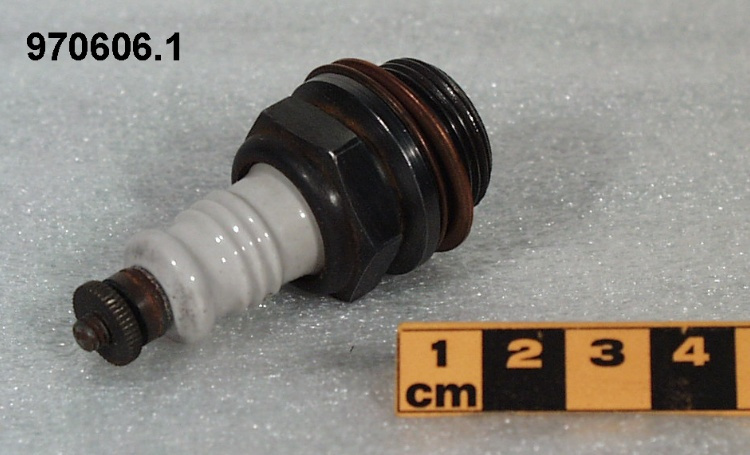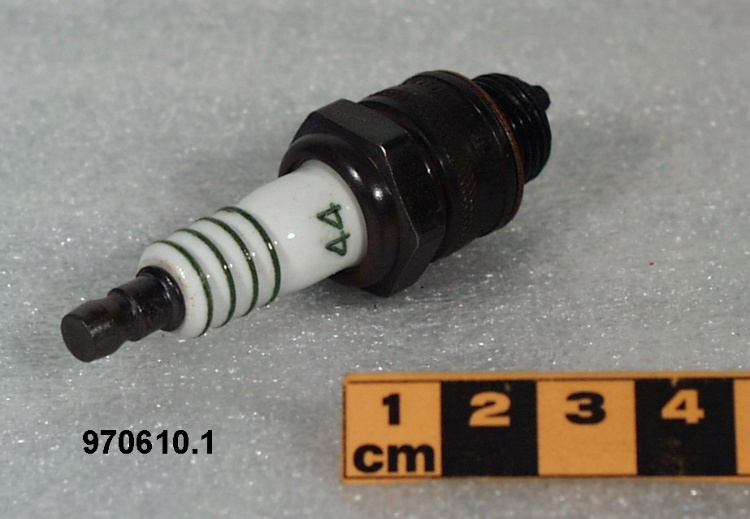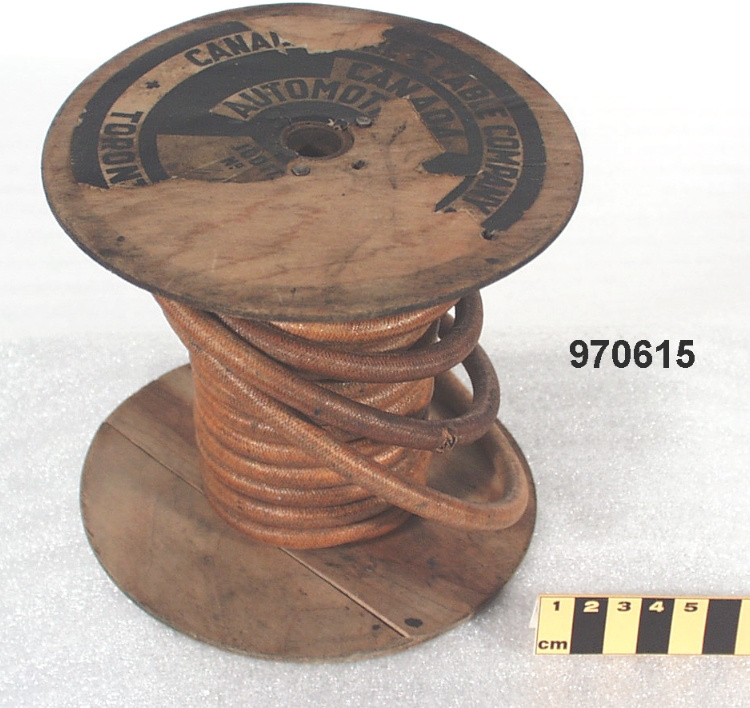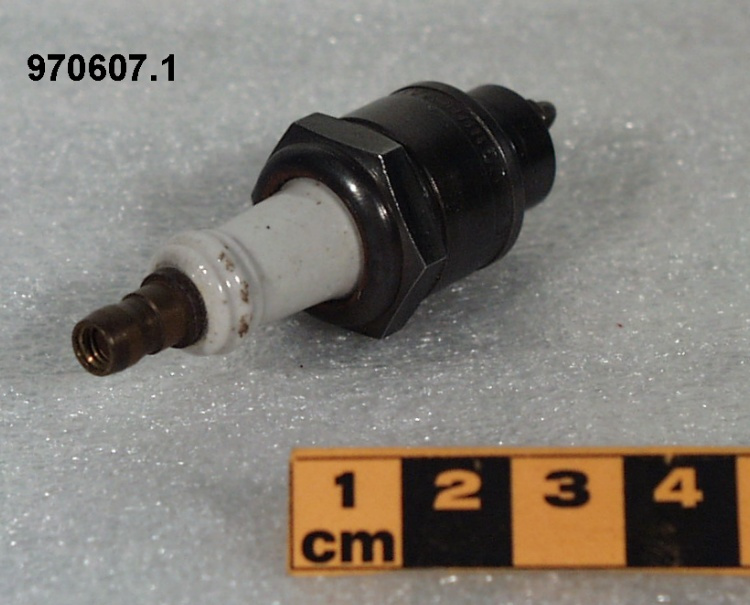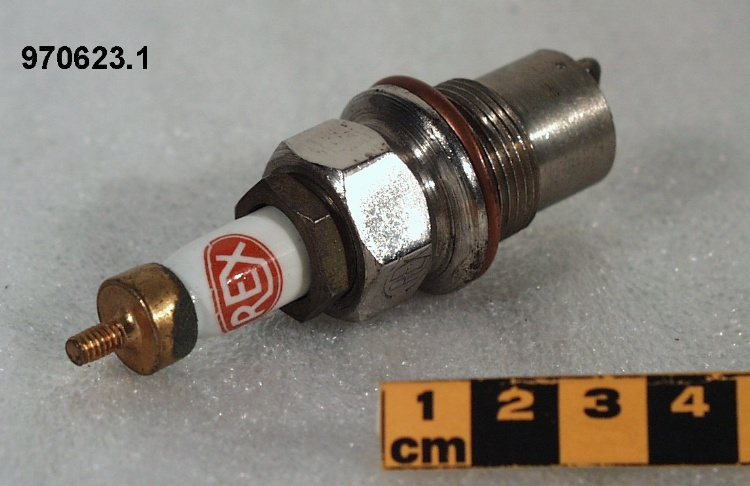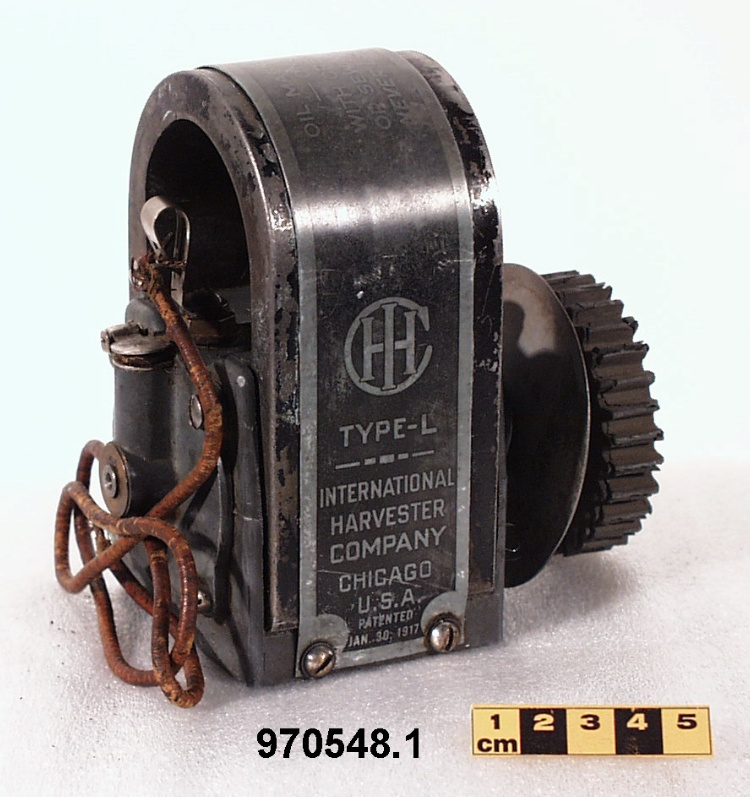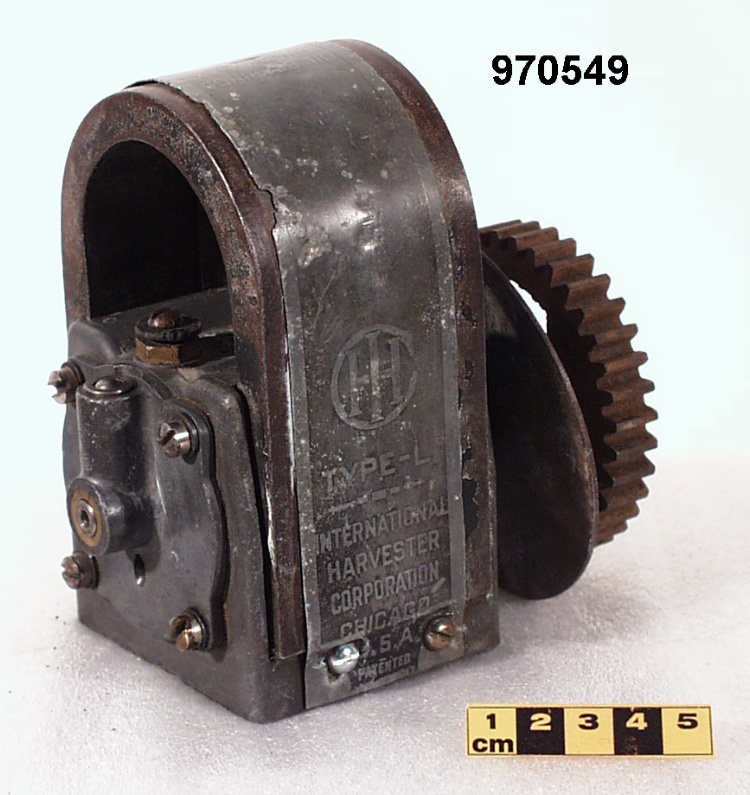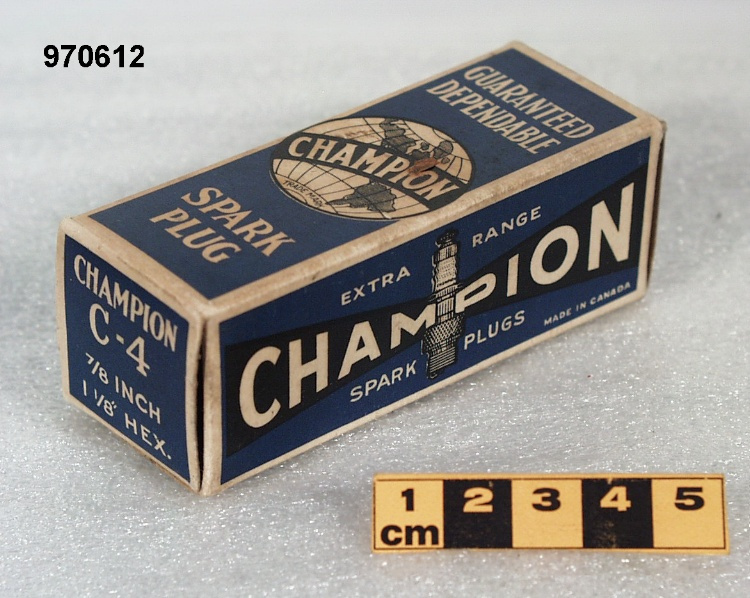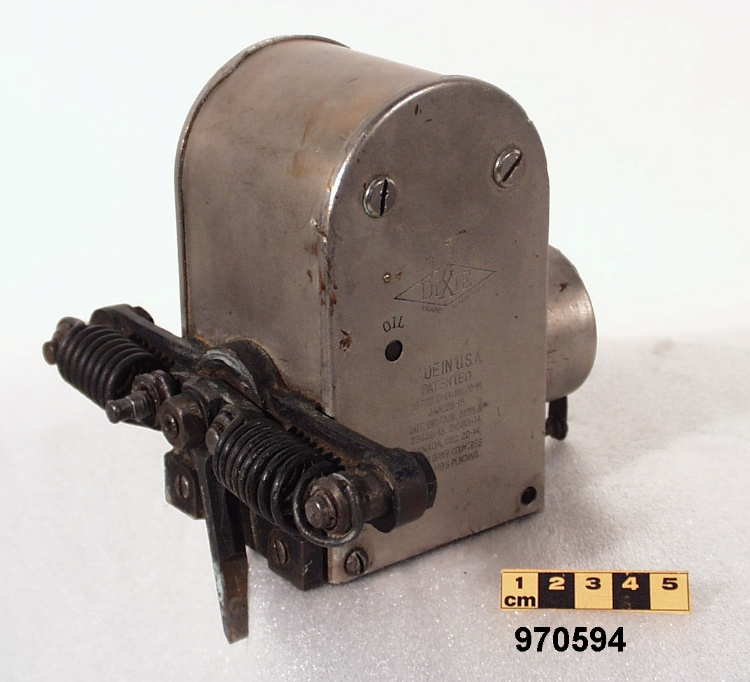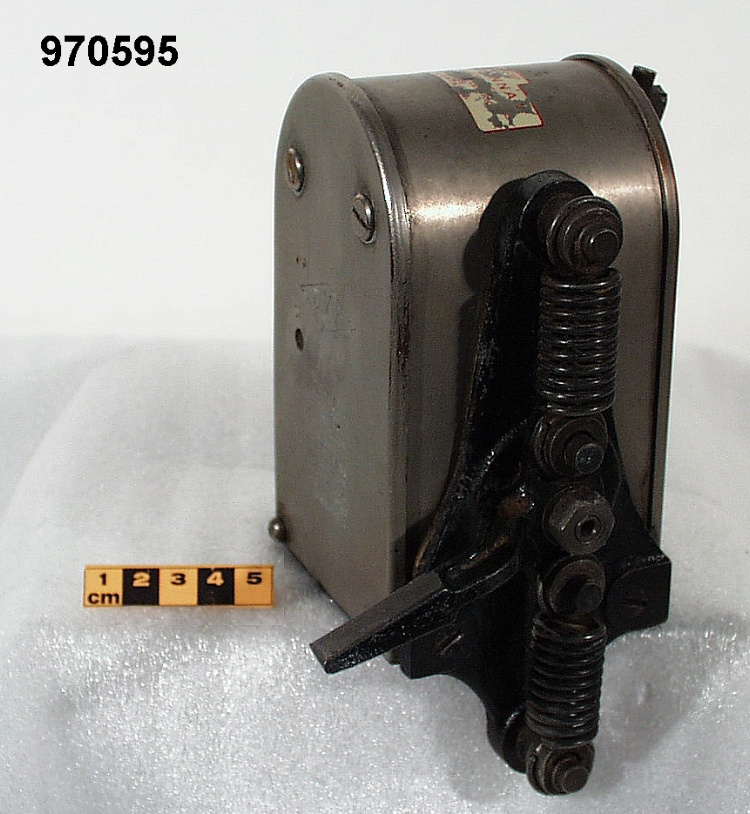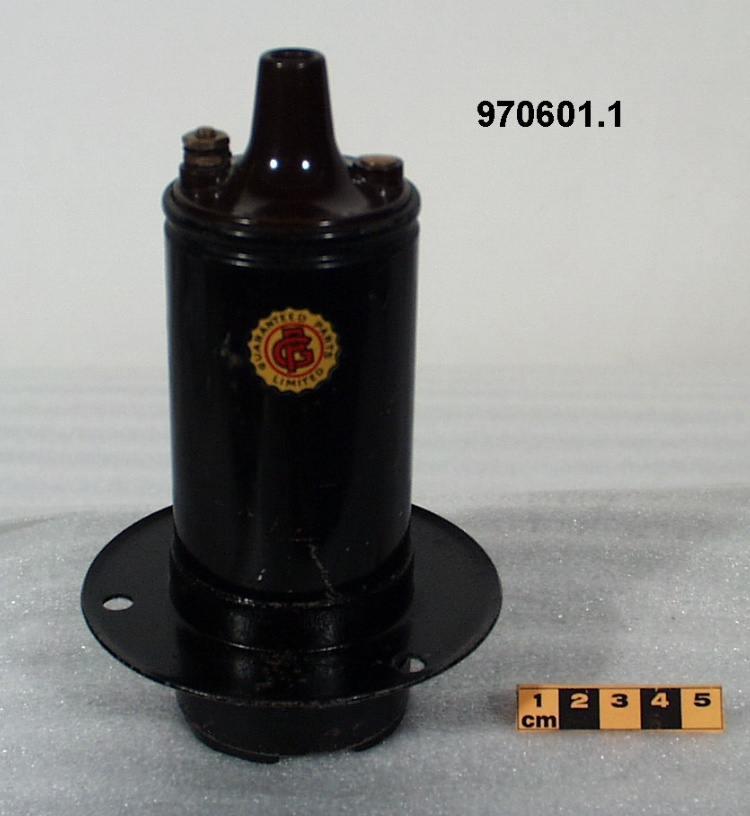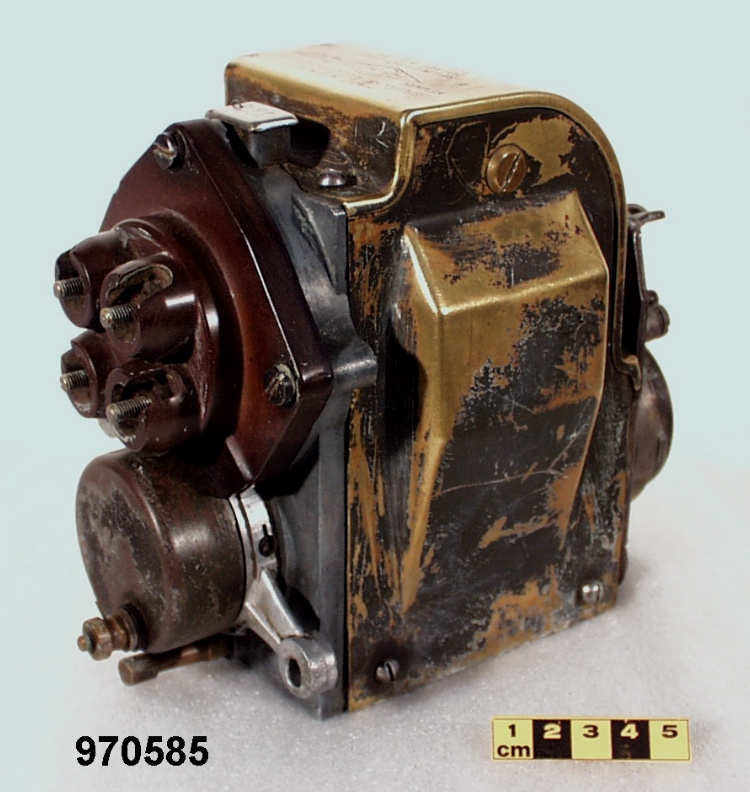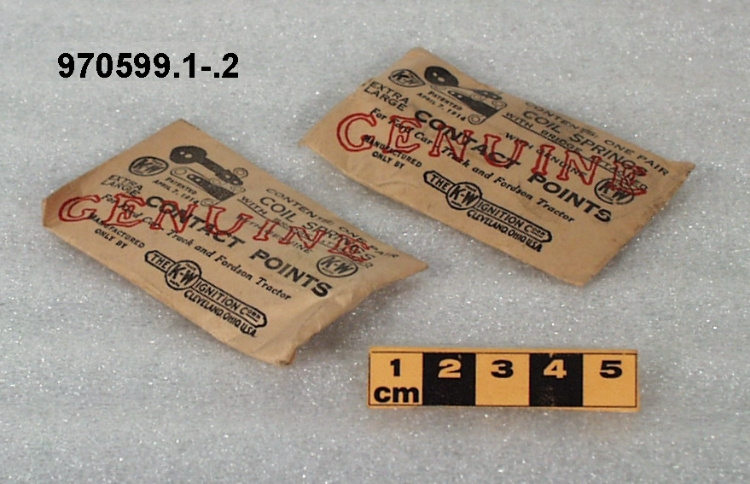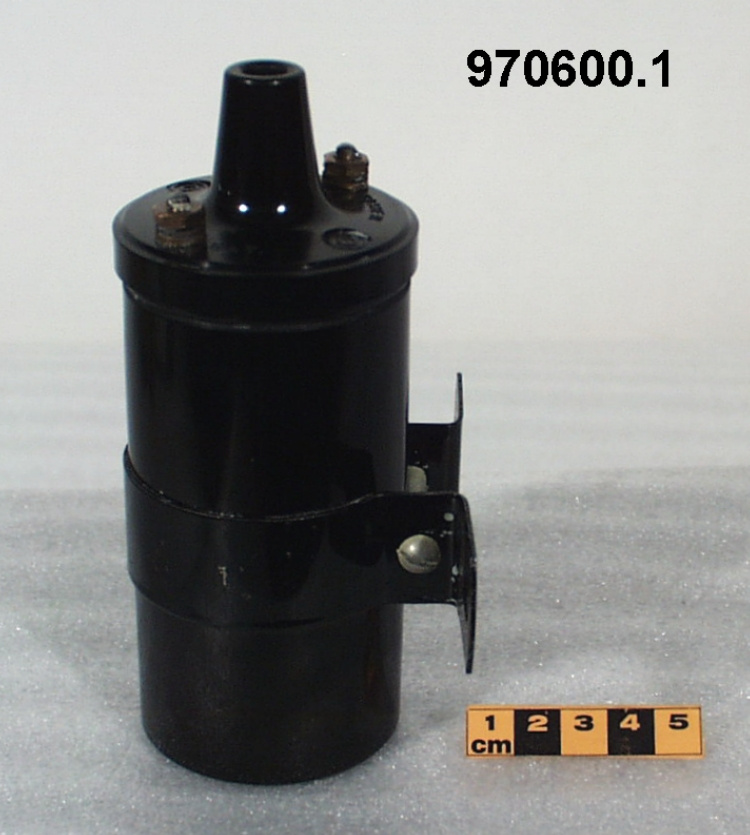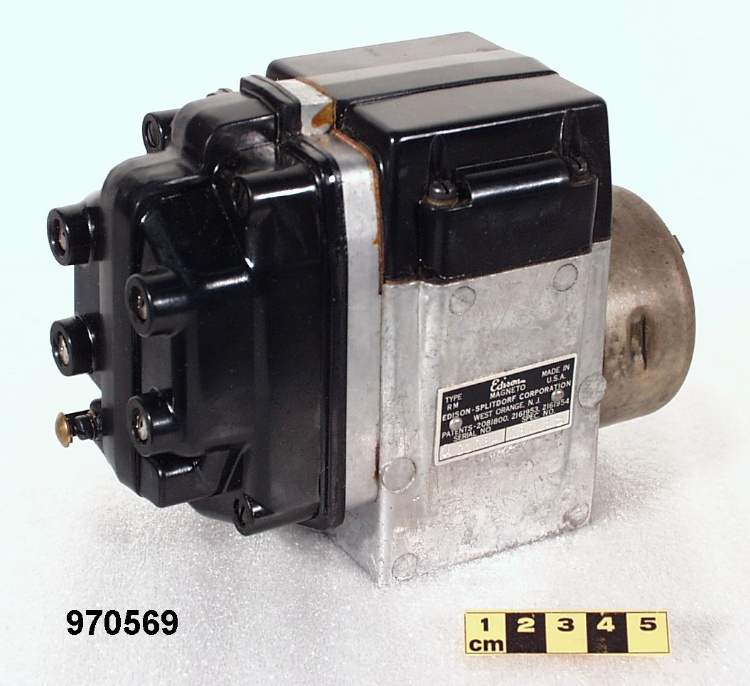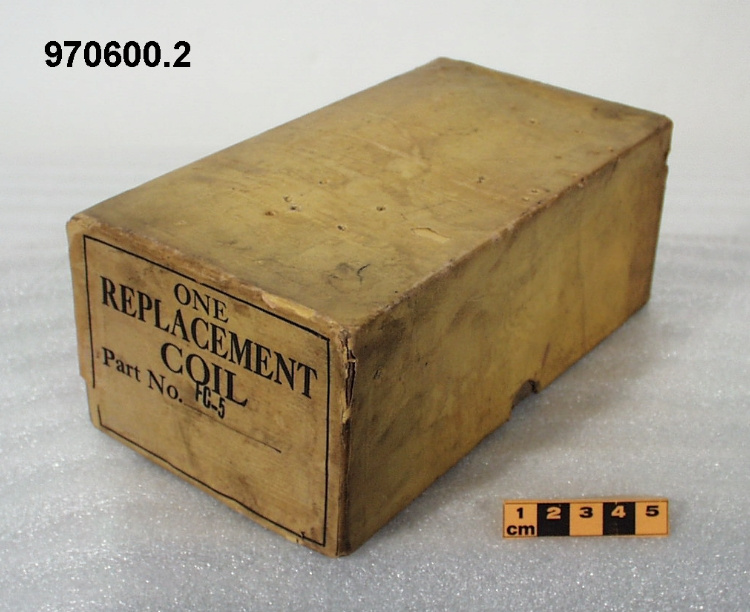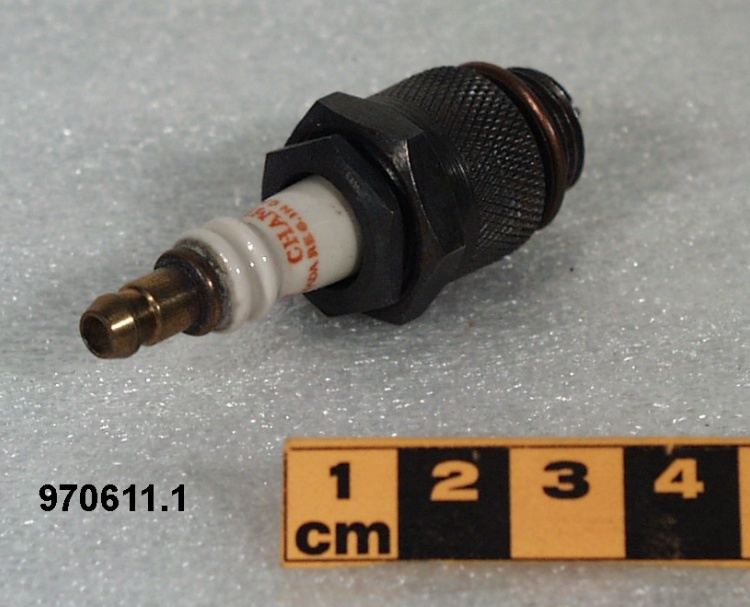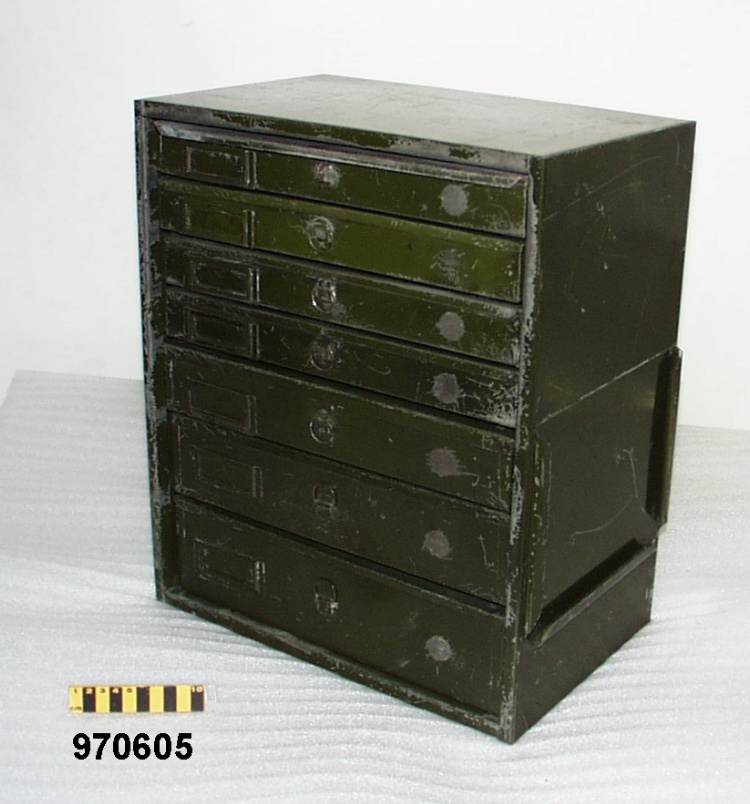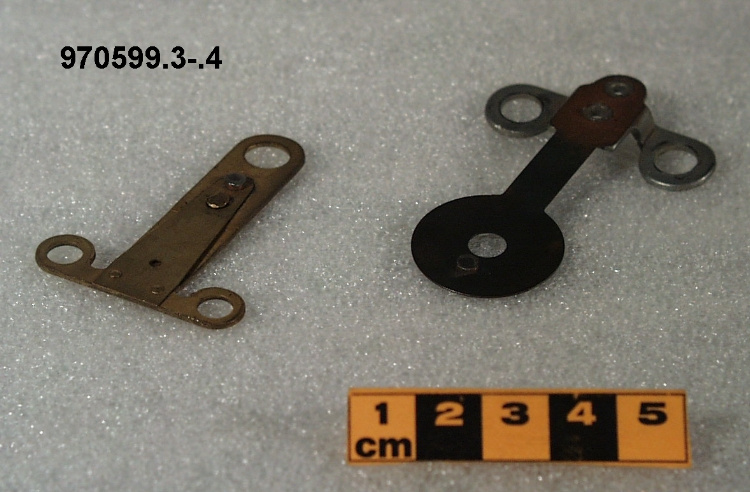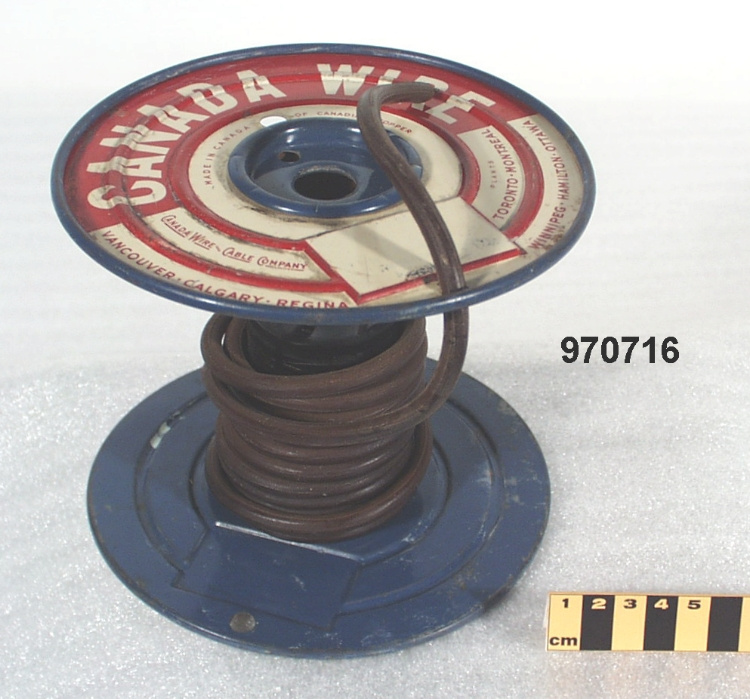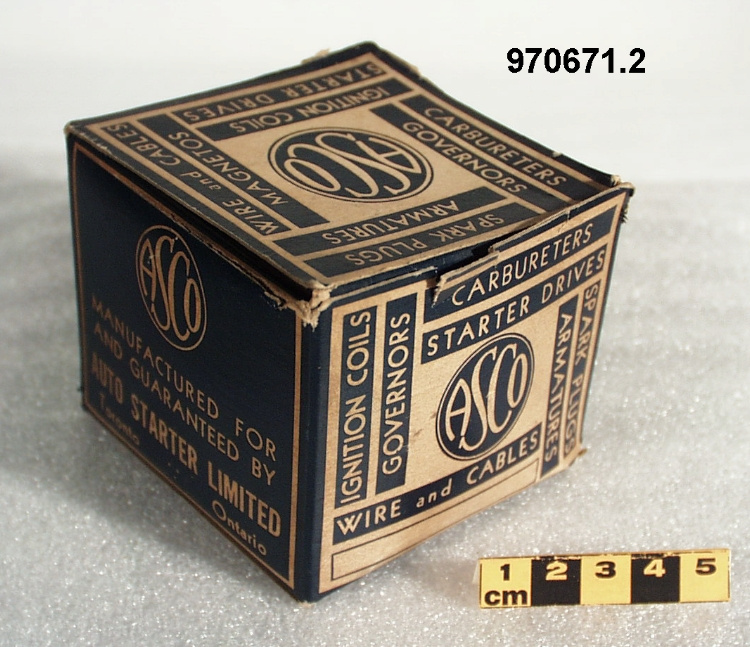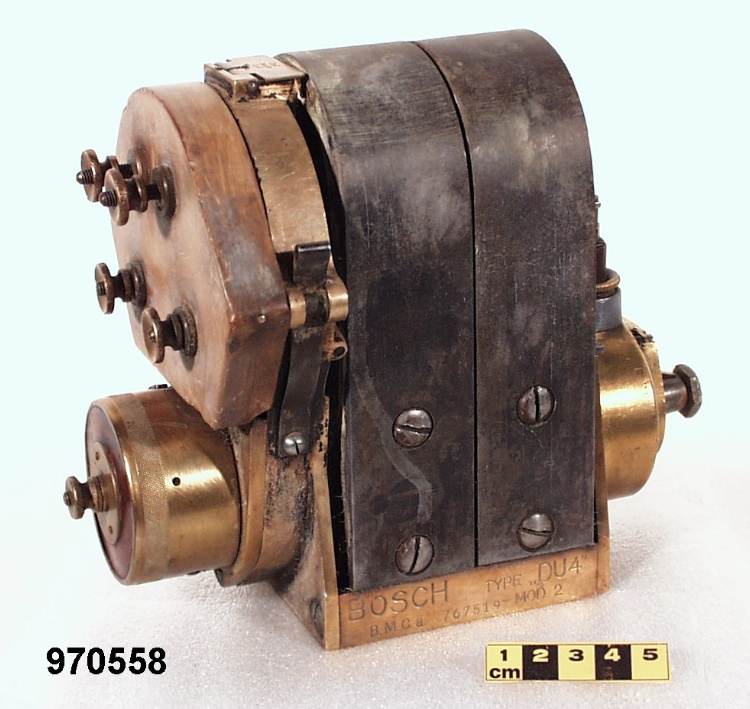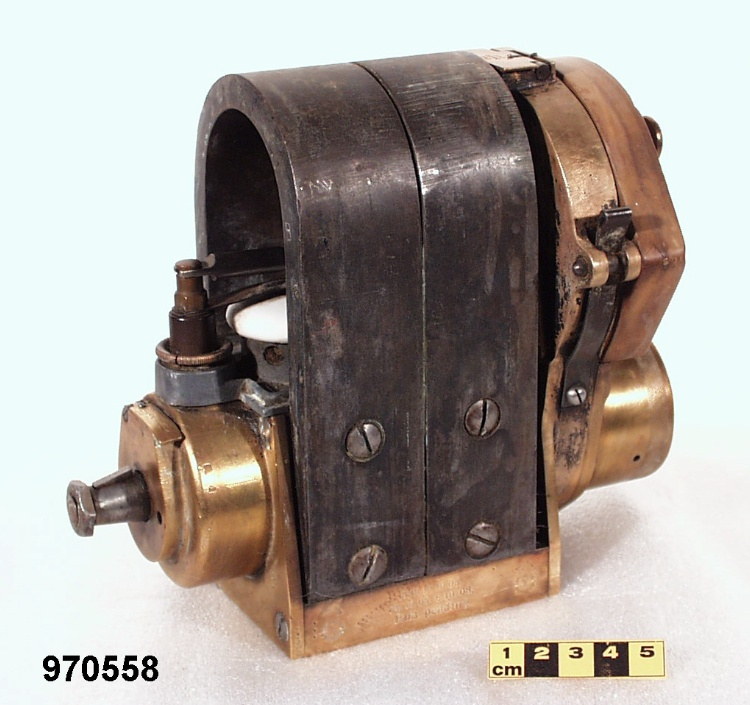Magneto
Use this image
Can I reuse this image without permission? Yes
Object images on the Ingenium Collection’s portal have the following Creative Commons license:
Copyright Ingenium / CC BY-NC-ND (Attribution-NonCommercial 4.0 International (CC BY-NC 4.0)
ATTRIBUTE THIS IMAGE
Ingenium,
1997.0558.001
Permalink:
Ingenium is releasing this image under the Creative Commons licensing framework, and encourages downloading and reuse for non-commercial purposes. Please acknowledge Ingenium and cite the artifact number.
DOWNLOAD IMAGEPURCHASE THIS IMAGE
This image is free for non-commercial use.
For commercial use, please consult our Reproduction Fees and contact us to purchase the image.
- OBJECT TYPE
- 4 CYL/HIGH TENS/SECONDARY WINDING
- DATE
- 1908
- ARTIFACT NUMBER
- 1997.0558.001
- MANUFACTURER
- Bosch
- MODEL
- DU4/2
- LOCATION
- United States of America
More Information
General Information
- Serial #
- 767519
- Part Number
- 1
- Total Parts
- 1
- AKA
- N/A
- Patents
- N/A
- General Description
- Cast brass base/ pressed brass cover & end plates/ brass parts/ ferrous magnets/ other metal parts/ porcelain part
Dimensions
Note: These reflect the general size for storage and are not necessarily representative of the object's true dimensions.
- Length
- 20.7 cm
- Width
- 12.0 cm
- Height
- 16.8 cm
- Thickness
- N/A
- Weight
- N/A
- Diameter
- N/A
- Volume
- N/A
Lexicon
- Group
- Motorized Ground Transportation
- Category
- Automotive engineering
- Sub-Category
- N/A
Manufacturer
- AKA
- Bosch
- Country
- United States of America
- State/Province
- Unknown
- City
- Unknown
Context
- Country
- Canada
- State/Province
- Ontario
- Period
- c. 1913-1973 (latter from paper slip)
- Canada
-
From the collection of automobile parts and servicing equipment acquired by Mr. T.H. Oliver, father of donor, during his career in automotive serving. He worked at Willys-Olivand, Fairbanks-Morse in Toronto and an auto garage in Aurora. In 1931, he began his own business, one part of which involved automotive electrical servicing. - Function
-
Part of an ignition system of internal combustion engine. It uses a magnetic field to produce an electric spark, which explodes gasoline vapour in a cylinder of engine, enabling it to function. - Technical
-
Unique Bosch design in which the external high tension rod carries voltage from the internal generator to the external distributor; the heavy porcelain insulator employs glass porcelain dielectric, one of the first dielectric materials available at the time. DU-4 was used in automobiles in the first decade of the 20th century (REF. 1). Since 1887, the Bosch manufacturing company has produced automotive equipment to automotive manufacturers around the world. Originally, Bosch started out as a small company in Germany, operated by Robert Bosch, an electrician and precision mechanic. In 1887, Bosch created a magneto ignition device for a stationary engine at the request of a customer using Siemens' double-T armature. He improved the design in 1902, developing a high-voltage magneto ignition system with spark-plug. As a result, the magneto turned Bosch into a global supplier of automotive technology as the automotive industry grew (Kulghatz, "Spark Emitter and Trademark: Bosch Magneto Ignition"). Today, Bosch's product collection contains approximately 14, 000 objects that extends over almost the complete history of the company (Bosch, "Product Archives"). In order to cut down on high expenses, such as customs duties and transportation costs, Bosch opened its first U.S. factory in Springfield, Massachusetts in 1912 to produce magneto ignition systems ("Bosch's 'At Last You Can Get Them…' Bosch Magnetos in the U.S."). Today, the Bosch manufacturing company is one of the largest independent parts supplier to the automotive industry (Bosch, "Products and Services: Automotive Technology"). The magneto ignition system was a technological innovation first developed in 1878 by Nikolaus August Otto, which was based on the principle of Siemens’ double-T armature (Diesel, Goldbeck, and Schildberger: 64). The development of electromagnetism in the 19th century greatly influenced the advancement of magnetos by various inventors around the world. As the automotive industry grew, the magneto ignition system became the standard automotive ignition system, resulting in the wide spread use of magnetos on early engines (Bosch, “Bosch Product History”). Today, automobiles rely on battery power; however, magnetos are commonly used to power small machines, including lawn mowers or snow blowers, and may be found in small gasoline engines such as motorcycles, tractors, marine, and aircraft engines because they do not need a battery (“Magneto”). - Area Notes
-
Unknown
Details
- Markings
- Incised lettering on base reads "BOSCH TYPE DU4/ B.M.C.a 767519 MOD 2" with patents info. on other side/ cw with paper slip reading "1973/ J. Walsh/ Magnwto Bosch ZR4/ ED34 V2/ Aurora Automotive/ No repair/ Shop Salvage"
- Missing
- Appears complete
- Finish
- Black magnets/ bras coloured base, cover, parts/ white insulator/ metallic parts
- Decoration
- Logo incised on base reading "SCHUTZ MARKE"
CITE THIS OBJECT
If you choose to share our information about this collection object, please cite:
Bosch, Magneto, after 1908, Artifact no. 1997.0558, Ingenium – Canada’s Museums of Science and Innovation, http://collections.ingeniumcanada.org/en/id/1997.0558.001/
FEEDBACK
Submit a question or comment about this artifact.
More Like This
